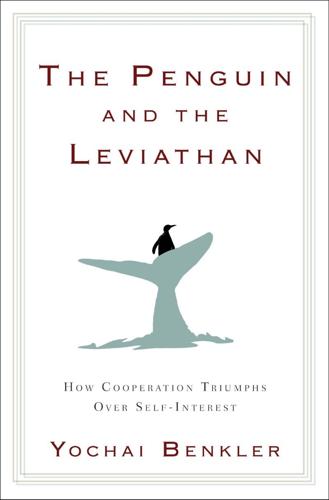
The Penguin and the Leviathan: How Cooperation Triumphs Over Self-Interest
by
Yochai Benkler
Published 8 Aug 2011
This adoption of cooperative systems in so many fields has been paralleled by a renewed interest among researchers in the social and behavioral sciences in the mechanics of cooperation. Perhaps humankind might not be so inherently selfish after all. Through the work of hundreds of scientists, we have begun to see mounting evidence in psychology, organizational sociology, political science, experimental economics, and elsewhere that people are in fact more cooperative and selfless, or at least behave far less selfishly, than most economists and others previously assumed. This isn’t just theory; dozens of field studies have identified cooperative systems, often more stable and effective than equivalent incentive-based ones.
…
In the next few chapters I will look at the intellectual arc of work in various fields over the past fifty years in several core disciplines concerned with human action and motivation. We will look broadly, but also dive more deeply into the role of cooperation in social relations: the effects of empathy and solidarity, our drive to do what is right and fair, and our desire to conform to the normal. I will draw from such diverse fields as evolutionary biology, experimental economics, psychology, organizational sociology, and neuroscience. I’ll also draw from the real world, with examples ranging from the band Radiohead’s online pricing (or non-pricing) structure to the success of the Obama campaign and case studies of companies like Toyota and Google; from the harsh realities of a group of lobster fishermen to the strides being made by companies simultaneously pursuing social justice and profit.
…
Other facts enter into the equation, such as relative need, luck, and talent. We come to accept that some people are better off than others, and that’s just how it is. And yet we still care about fairness in one way or another. What, then, might we be caring about when we feel that we care about fairness? In looking through the experimental economics and social psychology literature, it seems that when we care about “fairness” we really care about three distinct things: fairness of outcomes, fairness of intentions, and fairness of processes. With regard to outcomes, we care about how much each of us gets out of an interaction relative to others, given the generally understood norms.
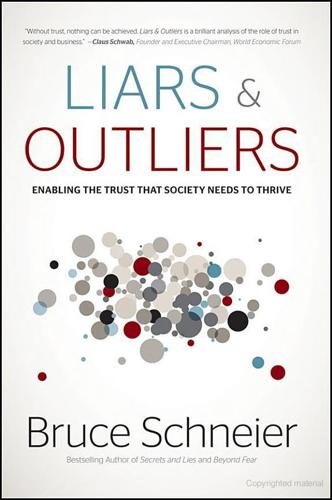
Liars and Outliers: How Security Holds Society Together
by
Bruce Schneier
Published 14 Feb 2012
Neuroscience is starting Kerri Smith (2011), “Neuroscience vs Philosophy: Taking Aim at Free Will,” Nature, 477:23–5. Ultimatum game Charles A. Holt (2000), “Y2K Bibliography of Experimental Economics and Social Science: Ultimatum Game Experiments,” University of Virginia. Hessel Oosterbeek, Randolph Sloof, and Gijs van de Kuilen (2004), “Cultural Differences in Ultimatum Game Experiments: Evidence From a Meta-Analysis,” Experimental Economics, 7:171–88. how the game works Werner Güth, Rolf Schmittberger, and Bernd Schwarze (1982), “An Experimental Analysis of Ultimatum Bargaining,” Journal of Economic Behavior & Organization, 3:267–88.
…
Thaler (1986), “Fairness and the Assumptions of Economics,” Journal of Business, 59:S285–S300. Christoph Engel (2011), “Dictator Games: A Meta Study,” Experimental Economics, 14:584–610. Trust game Joyce Berg, John Dickhaut, and Kevin McCabe (1995), “Trust, Reciprocity, and Social History,” Games & Economic Behavior, 10:122–42. not what happens Colin Cramer (2003), Behavioral Game Theory: Experiments in Strategic Interaction, Russell Sage Foundation. Public Goods game John O. Ledyard (1995), “Public Goods: A Survey of Experimental Research,” in Alvin E. Roth and John H. Kagel, eds., Handbook of Experimental Economics, Princeton University Press. fear of rejection Daniel Kahneman, John L.
…
The Joint Effects of Sex and Agreeableness on Income,” Journal of Personality & Social Psychology, in press. George Price Oren S. Harman (2010), The Price of Altruism: George Price and the Search for the Origins of Kindness, W.W. Norton & Co. bargaining games Gary E. Bolton (1998), “Bargaining and Dilemma Games: From Laboratory Data Towards Theoretical Synthesis,” Experimental Economics, 1:257–81. found a coin Paula F. Levin and Alice M. Isen (1972), “The Effect of Feeling Good on Helping: Cookies and Kindness,” Journal of Personality & Social Psychology, 21:384–8. flying through clouds Lawrence J. Sanna, Edward C. Chang, Paul M. Miceli, and Kristjen B. Lundberg (2011), “Rising Up to Higher Virtues: Experiencing Elevated Physical Heights Uplifts Prosocial Actions,” Journal of Experimental & Social Psychology, 47:472–6.

Misbehaving: The Making of Behavioral Economics
by
Richard H. Thaler
Published 10 May 2015
I keep a photograph of one of those farm stands in my office for inspiration. 16 Mugs At some point during the Vancouver year, the economist Alvin Roth, who was then deeply involved with experimental methods, organized a conference at the University of Pittsburgh. The goal was to present the first drafts of papers that would later be published in a small book called Laboratory Experimentation in Economics: Six Points of View. The contributors were major figures in the experimental economics community including Al, Vernon Smith, and Charlie Plott. Danny and I represented the new behavioral wing of the experimental economics community. For Danny and me, the most interesting discussion was about my beloved endowment effect. Both Vernon and Charlie claimed we didn’t have convincing empirical evidence for this phenomenon. The evidence I had presented was based on a paper written by Jack Knetsch along with an Australian collaborator, John Sinden.
…
I felt like I had arrived on the shores of a new world with no map, no idea where I should be looking, and no idea whether I would find anything of value. Kahneman and Tversky ran experiments, so it was natural to think that I should be running experiments, too. I reached out to the two founders of the then nascent field called experimental economics, Charlie Plott at Caltech and Vernon Smith, then at the University of Arizona. Economists traditionally have used historical data to test hypotheses. Smith and Plott were practitioners of and proselytizers for the idea that one could test economic ideas in the laboratory. I first took a trip down to Tucson to visit Smith.
…
This assertion, unsupported by any evidence, was firmly believed, even in spite of the fact that nothing in the theory or practice of economics suggested that economics only applies to large-stakes problems. Economic theory should work just as well for purchases of popcorn as for automobiles. Two Caltech economists provided some early evidence against this line of attack: David Grether and Charlie Plott, one of my experimental economics tutors. Grether and Plott had come across research conducted by two of my psychology mentors, Sarah Lichtenstein and Paul Slovic. Lichtenstein and Slovic had discovered “preference reversals,” a phenomenon that proved disconcerting to economists. In brief, subjects were induced to say that they preferred choice A to choice B . . . and also that they preferred B to A.
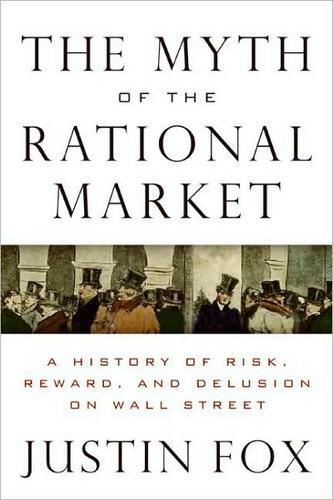
The Myth of the Rational Market: A History of Risk, Reward, and Delusion on Wall Street
by
Justin Fox
Published 29 May 2009
Reprinted in Thaler, Quasi Rational Economics. 19. Richard H. Thaler and H. M. Shefrin, “An Economic Theory of Self-Control,” Journal of Political Economy (April 1981): 392–406. 20. The best description of Chamberlin’s experiment, and of the rise of experimental economics in general, is in Ross M. Miller, Paving Wall Street: Experimental Economics and the Quest for the Perfect Market (New York: John Wiley & Sons, 2002). 21. It’s called the Social Science Faculty, and includes anthropologists, psychologists, political scientists, and legal scholars as well as economists. CHAPTER 11: BOB SHILLER POINTS OUT THE MOST REMARKABLE ERROR 1.
…
See also rational market hypothesis and agency costs, 162 and behavioral finance, 299–300 and the Chicago School, xiii, 101–5 and contrary evidence, 224–25 and corporate finance, 355n. 38 described, 153 and Fama, 97, 206–7 and finance, 202–6 and Friedman, 93 and Graham, 119–20 and information availability, 182 and Jensen, 107 and market anomalies, 304 and market crashes, 228, 232 and Mills, 320 and mutual funds, 125, 130, 131 origin of, 43, 73 and portfolio theory, 54–55, 57 and psychology, 201–2 resistance to, 105–7, 269–70 and risk, 139 and Samuelson, 73 and security analysis, 366n. 29 and Shiller, 196–98 and Shleifer, 247 and stock market bubbles, 315 and takeovers, 166–68 taxonomy of, 101 testing, 190, 194–95 “Efficient Markets: Theory and Evidence” (Fama), 104 Einstein, Albert, 7, 50, 66 Ellis, Charley, 130, 131 Employee Retirement Income Security Act (ERISA), 272, 290 Employee Retirement Security Act, 137–38 endogenous change, 305–6 endowment effect, 294 Engel, Louis, 97–98 Engels, Friedrich, 369n. 1 Engle, Robert, 139 Enron, 267, 283 environmental risk, 185 equilibrium theory and the Arrow-Debreu framework, 77–78 and asset pricing, 87 background of, 9–12 and behavioral finance, 301 and complexity theory, 304–6 and derivatives, 237 and intrinsic values, 193 and Keynesian economics, 35 and mathematics, 49–50 and Pareto’s Law, 349–50n. 2 and Reder, 89–90 and Samuelson, 61 equity risk premium, 141–43, 263–64 Erhard, Werner, 285, 319 Erhard Seminars Training (est), 285 event study method, 102 exchange rates, 92–93, 200, 250 executive compensation, 164–65, 274–79, 279–80, 284–85 expected utility, 51–52, 54, 75, 80, 176–77, 193 experimental economics, 188–90 Fallows, James, 365n. 8 Fama, Eugene, 323 and Alexander, 72 and Asness, 259–60 and behavioral finance, 295–96, 296–97, 298, 299–300 and the Chicago School of Economics, 96 and computing, 99–100 and the efficient market hypothesis, 101, 103–5, 193–94, 204, 206–8 and equity risk premium, 263 and experimental economics, 190 and the Journal of Financial Economics, 201 and Mandelbrot, 70, 134 and market crashes, 232 satirical depiction of, 287–88 and Shleifer, 248, 252 and stock price momentum, 209–10 and value stocks, 225 Fannie Mae, 313 Farmer, J.
…
The science and engineering hotbed had created an Economics Department of sorts,21 and Smith’s former Purdue colleague Charles Plott was one of its early hires. Together, they began to see the laboratory not just as an educational device but as a serious means of verifying economic theories. Smith and Plott hatched test after test, developing an experimental-economics ethos that has lived on at Caltech and a few other campuses, the most important element being that participants must compete for real monetary rewards. These weren’t the questionnaires and what-if scenarios used by other social scientists, but actual markets—albeit artificial ones populated almost exclusively by college students.
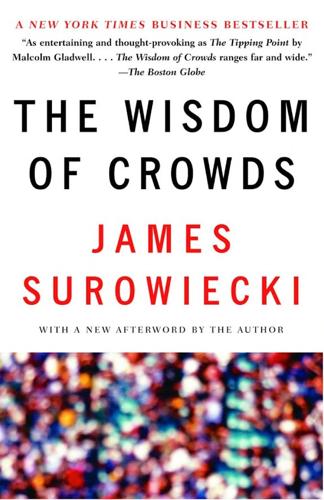
The Wisdom of Crowds
by
James Surowiecki
Published 1 Jan 2004
But even if you find the history unconvincing, there is this to consider: in the late 1990s, under the supervision of Bowles, twelve field researchers—including eleven anthropologists and one economist—went into fifteen “small-scale” societies (essentially small tribes that were, to varying degrees, self-contained) and got people to play the kinds of games in which experimental economics specializes. The societies included three that depended on foraging for survival, six that used slash-and-burn techniques, four nomadic herding groups, and two small agricultural societies. The three games the people were asked to play were the three standards of behavioral economics: the ultimatum game (which you just read about), the public-goods game (in which if everyone contributes, everyone goes away significantly better off, while if only a few people contribute, then the others can free ride off their effort), and the dictator game, which is similar to the ultimatum game except that the responder can’t say no to the proposer’s offer.
…
Specifically, companies can use methods of aggregating collective wisdom—like, most obviously, internal decision markets—when trying to come up with reasonable forecasts of the future and even, potentially, when trying to evaluate the probability of possible strategies. Despite the evidence from experimental economics and places such as the IEM, companies have been strangely hesitant to use internal markets. But the few examples that we have suggest that they could be very useful. In the late 1990s, for instance, Hewlett-Packard experimented with artificial markets—set up by the economists Charles R. Plott and Kay-Yut Chen—to forecast printer sales.
…
But at some point, one grain of sand too many will send the pile tumbling. INVESTORS TODAY ARE CERTAINLY better informed than any investors in history. They know that bubbles exist, and that they rarely—if ever—end well. So why are bubbles so hard to eliminate? For an answer, it helps to look at an experiment done at the Experimental Economics Laboratory at Caltech, where economists have demonstrated just how bubbles work. In the experiment, students were given the chance to trade shares in some imaginary company for fifteen five-minute periods. Everyone was given two shares to start, and some money to buy more shares if they wanted.

Why Stock Markets Crash: Critical Events in Complex Financial Systems
by
Didier Sornette
Published 18 Nov 2002
Uncertainty dynamics and predictability in chaotic systems, Quarterly Journal of the Royal Meteorological Society 125, 2855–2886. 389. Smith, V. L. (1982). Microeconomic systems as an experimental science, American Economic Review 72, 923–955. 390. Smith, V. L. (1991). Papers in Experimental Economics (Cambridge University Press, New York). 391. Smith, V. L. (1996). The handbook of experimental economics, Journal of Economic Literature 34, 1950–1952. 392. Sornette, D. (1998). Discrete scale invariance and complex dimensions, Physics Reports 297, 239–270. 393. Sornette, D. (1999). Complexity, catastrophe and physics, Physics World 12 (N12), 57–57. 394.
…
This is because people have natural intuitive mechanisms—mind modules that serve them well in daily interchanges—enabling them to “read” situations and the intentions and likely reactions of others without deep, tutored, cognitive analysis. This fact has been established by “experiments” performed by a large school of economics researchers (the bibliography of which contains 1500 entries [197]) in the fields of “experimental economics” [389]. These experimental approaches to economics, started in the midtwentieth century, were developed to examine propositions implied by economic theories of markets. An untested theory is simply a hypothesis, and science seeks to expand our knowledge of things by a process of testing hypotheses.
…
Indeed, “in many experimental markets, poorly informed, error-prone, and uncomprehending human agents interact through the trading rules to produce social algorithms which demonstrably approximate the wealth maximizing outcomes traditionally thought to require complete information and cognitively rational actors” [391]. In much of the literature on experimental economics [101, 226, 143], the rational expectations model has been the main benchmark against which to check the informational efficiency of experimental markets. The research generally falls into two categories: information dissemination between fully informed agents (“insiders”) and uninformed agents, and information aggregation among many partially informed agents.
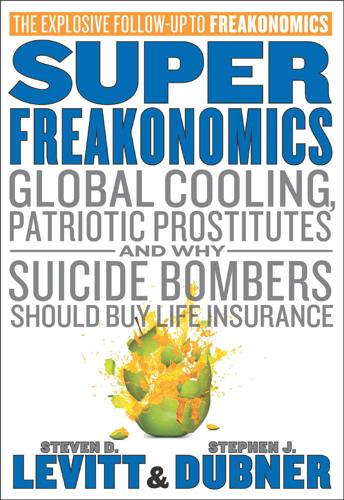
SuperFreakonomics
by
Steven D. Levitt
and
Stephen J. Dubner
Published 19 Oct 2009
The message couldn’t have been much clearer: human beings indeed seemed to be hardwired for altruism. Not only was this conclusion uplifting—at the very least, it seemed to indicate that Kitty Genovese’s neighbors were nothing but a nasty anomaly—but it rocked the very foundation of traditional economics. “Over the past decade,” Foundations of Human Sociality claimed, “research in experimental economics has emphatically falsified the textbook representation of Homo economicus.” Non-economists could be forgiven if they felt like crowing with satisfaction. Homo economicus, that hyper-rational, self-interested creature that dismal scientists had embraced since the beginning of time, was dead (if he ever really existed).
…
Perhaps this altruism was just an ancient evolutionary leftover, like that second kidney. But who cared why it existed? The United States would lead the way, a light unto the nations, relying proudly on our innate altruism to procure enough donated kidneys to save tens of thousands of lives every year. The Ultimatum and Dictator games inspired a boom in experimental economics, which in turn inspired a new subfield called behavioral economics. A blend of traditional economics and psychology, it sought to capture the elusive and often puzzling human motivations Gary Becker had been thinking about for decades. With their experiments, behavioral economists continued to sully the reputation of Homo economicus.
…
His stay at Arizona was brief, for he was soon recruited by the University of Maryland. While teaching there, he also served on the President’s Council of Economic Advisors; List was the lone economist on a forty-two-person U.S. delegation to India to help negotiate the Kyoto Protocol. He was by now firmly at the center of experimental economics, a field that had never been hotter. In 2002, the Nobel Prize for economics was shared by Vernon Smith and Daniel Kahneman, a psychologist whose research on decision-making laid the groundwork for behavioral economics. These men and others of their generation had built a canon of research that fundamentally challenged the status quo of classical economics, and List was following firmly in their footsteps, running variants of Dictator and other behavioralist lab games.

Randomistas: How Radical Researchers Changed Our World
by
Andrew Leigh
Published 14 Sep 2018
Chang & Phillip Li, ‘A preanalysis plan to replicate sixty economics research papers that worked half of the time’, American Economic Review, vol. 107, no. 5, 2017, pp. 60–4. 50John P.A. Ioannidis, ‘Why most published research findings are false’, PLoS Med, vol. 2, no. 8, 2005, e124. 51See, for example, Zacharias Maniadis, Fabio Tufano & John A. List, ‘How to make experimental economics research more reproducible: Lessons from other disciplines and a new proposal’, Replication in Experimental Economics, 2015, pp. 215–30; Regina Nuzzo, ‘How scientists fool themselves – and how they can stop’, Nature, vol. 526, no. 7572, 2015, pp. 182–5. 52Larry Orr, ‘If at first you succeed, try again!’, Straight Talk on Evidence blog, Laura and John Arnold Foundation, 16 August 2017 53Author’s interview with David Johnson, 16 July 2015. 54The same is true of the question as to when research should overturn prior beliefs.
…
Estimating the impacts of exposing corrupt politicians’, Journal of Political Economy, forthcoming. 36F.H. Knight, Risk, Uncertainty, and Profit, New York: Cosimo, 1921, p. 313, quoted in Omar Al-Ubaydli & John A. List, ‘On the generalizability of experimental results in economics’, in Guillaume R. Fréchette and Andrew Schotter (eds) Handbook of Experimental Economic Methodology, New York: Oxford University Press, 2015, pp. 420–62. 37Glenn W.Harrison & John A. List, ‘Field experiments’, Journal of Economic Literature, vol. 42, no. 4, 2004, pp. 1009–55. 38John A. List, ‘Do explicit warnings eliminate the hypothetical bias in elicitation procedures? Evidence from field auctions for sportscards”, American Economic Review, vol. 91, no. 4, 2001, pp. 1498–1507. 39Peter Bohm, ‘Estimating the demand for public goods: An experiment”, European Economic Review, vol. 3, 1972, pp. 111–30. 40Quoted in Manzi, Uncontrolled, p. 152. 41Robert Slonim, Carmen Wang, Ellen Garbarino & DanielleMerrett, ‘Opting-In: Participation Biases in Economic Experiments’, Journal of Economic Behavior and Organization, vol. 90, 2013, pp. 43–70. 42Ernst Fehr & John A.
…
See George Kelling & James Wilson, ‘Broken windows: The police and neighborhood safety’, Atlantic, vol. 249, no. 3, 1982, pp. 29–38. 31See USAID, ‘Frequently Asked Questions about Development Innovation Ventures’, Washington, DC: USAID, 6 February 2017; USAID, ‘FY2015 & FY2016 Development Innovation Ventures Annual Program Statement’, Washington, DC: USAID, 20 October 2015. 32These examples are drawn from the Coalition for Evidence-Based Policy (now incorporated into the Laura and John Arnold Foundation), and a presentation by Adam Gamoran, titled ‘Measuring impact in science education: Challenges and possibilities of experimental design’, NYU Abu Dhabi Conference, January 2009. 33‘In praise of human guinea pigs’, The Economist, 12 December 2015, p. 14. 34Education Endowment Foundation, ‘Classification of the security of findings from EEF evaluations’, 21 May 2014. 35‘David Olds speaks on value of randomized controlled trials’, Children’s Health Policy Centre, Faculty of Health Sciences, Simon Fraser University, 26 May 2014. 36Dean Karlan & Daniel H. Wood, ‘The effect of effectiveness: Donor response to aid effectiveness in a direct mail fundraising experiment’, Journal of Behavioral and Experimental Economics, vol. 66, issue C, 2017, pp. 1–8. The mailings were sent in 2007 and 2008, but the description quoted is from the 2008 letters. TEN COMMANDMENTS 1Gueron and Rolston, Fighting for Reliable Evidence, p. 383 2Admittedly, this creates the risk that results may come too late to shape policy.
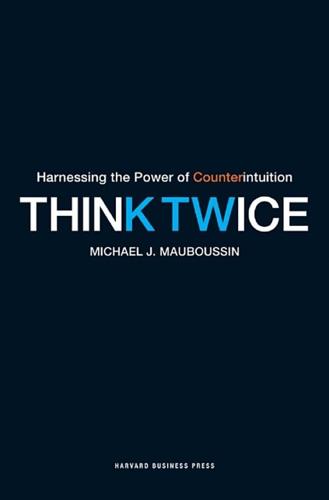
Think Twice: Harnessing the Power of Counterintuition
by
Michael J. Mauboussin
Published 6 Nov 2012
The earnings camp listens to what people talk about day-to-day, including the investment community’s chatter, what hits CNBC’s screens, and the stories on the Wall Street Journal’s. pages. In contrast, the economists look at how the market behaves. One group focuses on the components, the other on the aggregate. Research in experimental economics, for example, shows that markets can generate very efficient prices even when the individual participants have limited information. Just as watching one bee won’t help you understand the hive’s behavior, listening to individual investors will give you scant insight into the market.10 I have explained to executives countless times that the opinion of the market is far more relevant than the utterances of individuals.
…
Shyam Sunder, “Relationship Between Accounting Changes and Stock Prices: Problems of Measurement and Some Empirical Evidence,” Journal of Accounting Research: Empirical Research in Accounting: Selected Studies 1973 11 (1973): 1–45. 10. Vernon L. Smith, Rationality in Economics: Constructivist and Ecological Forms (Cambridge: Cambridge University Press, 2008). See also Charles R. Plott and Vernon L. Smith, eds., Handbook of Experimental Economics Results: Volume 1 (Amsterdam: North-Holland, 2008). 11. John R. Graham, Campbell R. Harvey, and Shiva Rajgopal, “Value Destruction and Financial Reporting Decisions,” Financial Analysts Journal 62, no. 6 (2006): 27–39. 12. This is a bias that arises from the availability heuristic. See Max H.
…
New York: Viking, 2002. Plassmann, Hilke, John O’Doherty, Baba Shiv, and Antonio Rangel. “Marketing Actions Can Modulate Neural Representations of Experienced Pleasantness.” Proceedings of the National Academy of Sciences 105, no. 3 (2008): 1050–1054. Plott, Charles R., and Vernon L. Smith, eds. Handbook of Experimental Economics Results: vol. 1. Amsterdam: North-Holland, 2008. Poundstone, William. Fortune’s Formula: The Untold Story of the Unscientific Betting System That Beat the Casinos and Wall Street. New York: Hill and Wang, 2005. Pronovost, Peter. “Testimony before Government Oversight Committee,” April 16, 2008.
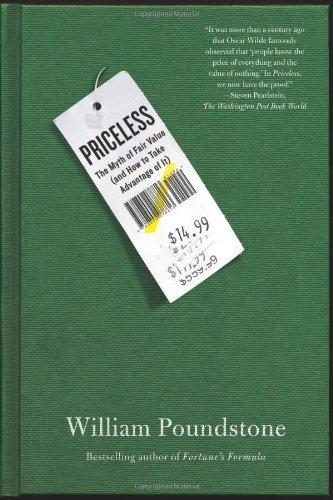
Priceless: The Myth of Fair Value (And How to Take Advantage of It)
by
William Poundstone
Published 1 Jan 2010
This was roughly Graham’s assessment. He believed that most investors made emotional decisions to plunge into or out of the market and didn’t care much about the price. There has been much experimental work on the psychology of market prices. Colin Camerer has used Caltech’s Laboratory for Experimental Economics and Political Science to create super-simplified stock markets. The lab is the creation of Charles Plott, one of the economists who replicated preference reversal. It consists of a grid of cubicles, each with a computer. Every keystroke or mouse action is recorded and archived by software.
…
“Experts, Amateurs, and Real Estate: An Anchoring-and-Adjustment Perspective on Property Pricing Decisions.” Organizational Behavior and Human Decision Processes 84, 87–93. Oosterbeek, Hessel, Randolph Sloof, and Gijs van de Kuilen (2004). “Cultural Differences in Ultimatum Game Experiments: Evidence from a Meta-analysis.” Experimental Economics 7, 171–88. Orr, Dan, and Chris Guthrie (2006). “Anchoring, Information, Expertise, and Negotiation: New Insights from Meta-Analysis.” Ohio State Journal on Dispute Resolution 21, 597–628. Available at ssrn.com/abstract=900152. Phillips, Lawrence D., and Detlof von Winterfeldt (2006).
…
Lambert (eds.), Foundations of Social Cognition: A Festschrift in Honor of Robert S. Wyer, Jr. Mahwah, N.J.: Lawrence Erlbaum Associates. Strategic Interaction Group (2002). “An Interview with Werner Güth.” Excerpt at http://www.econ.mpg.de/english/research/ESI/gueth_interview.php. The full interview is in Experimental Economics: Financial Markets, Auctions, and Decision Making, Fredrik Andersson and Hakan Holm (eds.). Dordrecht, Netherlands: Kluwer Academic Publishers. Stross, Randall (2008). “What Carriers Aren’t Eager to Tell You About Texting.” The New York Times, Dec. 26, 2008. Summers, Lawrence (1986).
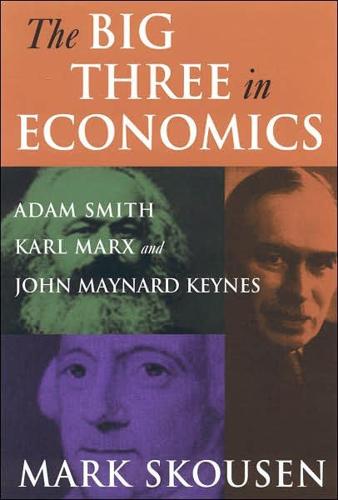
Big Three in Economics: Adam Smith, Karl Marx, and John Maynard Keynes
by
Mark Skousen
Published 22 Dec 2006
What Hayek views as positive, Stiglitz sees as negative. Market economists counter Stiglitz by arguing that while imperfect information may indeed be pervasive, the outcome of the imperfect competitive market system acts "as if' it is perfectly competitive. For example, experimental economics seems to confirm this "as if' approach. Vernon L. Smith, Nobel laureate from George Mason University and founder of experimental economics, ran an experiment to test the Chamberlin-Robinson "imperfect competition" model. Recall from chapter 5 that this model suggested that a small number of sellers (or buyers) creates an imperfect form of competition, causing prices to rise, and output to fall.
…
Churchill Keynesian view of, 150, 175, 181 (Keynes), 142 leaks, 180 Economic Consequences of the Peace production and, 48—49. 184 (Keynes), 140-141, 156 productive and unproductive, 186 Economic determinism, 80, 87, 96 Economic freedom, 10-11, 18 Environmentalism, 214 economic growth and, 31-32, 203-204 Equation of exchange, 126-127, 196 effects of, 31-32, 34 Essay on Population (Malthus), 51 See also Capitalism Essay on the Nature of Commerce in Economic growth General (Cantillon), 42-43 Bohm-Bawerk on, 112 Essence of Christianity (Feuerbach), 71 economic freedom and, 31-32, 203-204 Everyday Stalinism (Fitzpatrick), 203 keys to, 11 Exchange Protestantism and, 124 classical view of, 106 savings and, 179 equation of, 126-127, 196 Economic indicators, 182 key to wealth, 9 Economic Possibilities for Our Marxist view of, 99-100 Grandchildren (Keynes), 152, 217 Experimental economics, 215 Economic theories Exploitation, worker, 85, 86 pendulum approach to, ix-x totem pole approach to, x-xi Fable of the Bees, 39-40 Economics Falling profits, 85-86 blackboard, 55 Faust, 72 classical. See Classical model Federal Reserve, 127-128, 160, expanding role of, 209 194-195 the imperial science, 209 Feuerbach, Ludwig, 71 mathematics and, 55, 56 Fiscal policy, 172, 208 moral behavior and, 30 Fisher, Irving, 125-128, 129 neoclassical, 106, 192-193, 199, 205 Fitzpatrick, Sheila, 203 as a social science, 113 Foster, William T„ 157-158, 183 stagnation of, 106 Foundations of Economic Analysis Economics (Samuelson), 165-166, 169, (Samuelson), 55 170 Franklin, Benjamin, 44—45. 174 Economics of Impetfect Competition Free banking, 36 (Robinson), 134-135 Free markets Edgeworth, Francis, 115-116 degrees of faith in, 26-27 Education, 89 post Soviet Union, 199, 204 Effective demand, 158-151^8 wealth and prosperity through, 18 Egoism, 27, 29 Free trade.
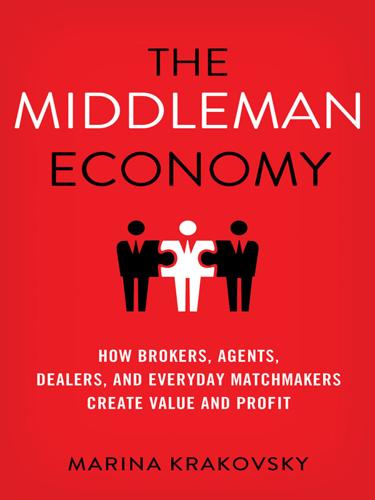
The Middleman Economy: How Brokers, Agents, Dealers, and Everyday Matchmakers Create Value and Profit
by
Marina Krakovsky
Published 14 Sep 2015
For example, economic theory has much to say about transaction-cost economics, two-sided markets, and intermediaries’ ability to reduce information asymmetries between buyers and sellers. In particular, game theory informs our understanding of repeated interactions, reputations, shirking and cheating, and third-party enforcement. Social psychology and experimental economics show how acting on behalf of others affects people’s behavior and impressions. And sociology offers insights into the ways the structures of social networks create opportunities for middlemen. This book reports on fascinating research from these and other fields, revealing the ways in which the scientific findings illuminate and reinforce the lessons that top middlemen have picked up on the job.
…
The number rises to $10,000 for Gold, $25,000 for Platinum, and an astounding $150,000 per month for Titanium. 17.You must also get consistently high feedback scores from your buyers: fall anywhere below 98 percent positive feedback, and you lose your PowerSeller status. 18.Interview with Ann Whitley Wood, September 24, 2013. 19.Along the same lines, a recent article pointed out that large players also dominate the Prosper Marketplace (where two-thirds of the lenders are hedge funds and other large institutions) and that nearly half of the hosts on Airbnb had at least three listings on the site, suggesting these hosts weren’t just renting out a spare bedroom. See William Alden, “The Business Tycoons of Airbnb,” New York Times Magazine, November 25, 2014. 20.Paul Resnick, Richard Zeckhauser, John Swanson, and Kate Lockwood, “The Value of Reputation on eBay: A Controlled Experiment,” Experimental Economics 9, no. 2 (2006): 79–101. 21.Nira Yacouel and Aliza Fleischer, “The Role of Cybermediaries in Reputation Building and Price Premiums in the Online Hotel Market,” Journal of Travel Research 51, no. 2 (2012): 219–26. 22.Michael Anderson and Jeremy Magruder, “Learning from the Crowd: Regression Discontinuity Estimates of the Effects of an Online Review Database,” The Economic Journal 122, no. 563 (September 2012): 957–89. 23.Michael Luca, “Reviews, Reputation, and Revenue: The Case of Yelp.com,” Harvard Business School Working Paper, No. 12–016. 24.Carl Shapiro, “Premiums for High Quality Products as Returns to Reputation,” The Quarterly Journal of Economics (November 1983): 659–79. 25.Investing in a storefront is one of several ways sellers can elicit trust among buyers.
…
Greene, and Max Bazerman, “Dirty Work, Clean Hands: The Moral Psychology of Indirect Agency,” Organizational Behavior and Human Decision Processes 109 (2009): 134–41. 3.Gabriel Rossman, “Obfuscatory Relational Work and Disreputable Exchange,” Sociological Theory 32, no. 1 (May 2014): 43–63. 4.Mikhail Drugov, John Hamman, and Danila Serra, “Intermediaries in Corruption: An Experiment,” Experimental Economics 17, no. 1 (March 2014): 78–99. 5.For a review, see Neeru Paharia, Lucas C. Coffman, and Max Bazerman, “Intermediation and Diffusion of Responsibility in Negotiation: A Case of Bounded Ethicality,” in Gary E. Bolton and Rachel T. A. Croson (eds.), The Oxford Handbook of Economic Conflict Resolution (New York: Oxford University Press, 2012), 37–46. 6.William Finlay and James E.

Adam Smith: Father of Economics
by
Jesse Norman
Published 30 Jun 2018
For the spillover effects of prosocial environments, and the importance of institutions in shaping persisting habits, see Alexander Peysakhovich and David G. Rand, ‘Habits of Virtue: Creating Norms of Cooperation and Defection in the Laboratory’, Management Science, Articles in Advance, 2015 Experimental economics: Robert Sugden has suggested that David Hume should be considered one of the originators of experimental economics. In the Treatise Hume argues that the workings of the human mind should be investigated by ‘careful and exact experiments, and the observation of those particular effects, which result from its different circumstances and situations’ (A Treatise of Human Nature, ed.
…
As he put it, ‘If a nation could not prosper without the enjoyment of perfect liberty and perfect justice, there is not in the world a nation which could ever have prospered.’ Substitute ‘markets’ for ‘justice’, and it is a point Kenneth Arrow would have been proud of. It is this Smithian seam of inquiry that Vernon Smith and his fellow workers in experimental economics found themselves mining so successfully when they started to test mainstream assumptions about economic rationality under laboratory conditions. They found that their subjects’ behaviour could not be adequately explained by the simple assumption of utility-maximization. On the contrary, it was deeply influenced by specific norms of reciprocity and fairness, by force of habit and by desire to preserve reputation.
…
Johnson’s Club, 97, 138 Drysdale, John, 9 Dubner, Stephen J., 208–209 Dundas, Henry, 135–136, 141–142 early life, of Smith, A., 3–10, 15 East India Company, 114 growth of, 277–278 mercantile system and, 267–268 shareholders of, 271 taxation and, 102 The Wealth of Nations on, 139–141 economic behaviour, 21 economic progress, 112 economic relationships, in commercial society, 293–294 economist, Smith, A., as, 190–192 economy of regard, 304–308 Edgeworth, Francis Ysidro, 202–203 Edinburgh, Scotland, 4–5, 36–40, 49, 89–90, 133, 159 Edinburgh Review, 51, 55 education, of women, 219–220 Education Act, of 1496, 8 Edward, James Francis, 32 effective communication, 41–42 efficiency, 194, 196–197, 204, 216, 225–227, 243–244 efficient market hypothesis, 225–228, 243–245, 251–252 Elements (Euclid), 19 Elements of Criticism (Kames), 44 Elliot, Gilbert, 126 empiricism, of Smith, A., 221–222 Engels, Friedrich, 212 England Act of Union, with Scotland, 11, 14–15 commercial system of, 114–115 European policy of, 68–69 France and, 68–69, 101, 277, 291 government in, 79 housing market of, 240 India and, 277–278 Jacobitism in, 34–35 London, 96–97, 101 militias prohibited in, 118 national debt of, 70–71 political economy, 200 Reformation, 164 Scots in, 40 slavery abolished in, 231 Smith, A., in, 96–97 taxation in, 121–122 trade of, 113, 115–116, 136 See also Church of England; History of England (Hume) the Enlightenment, 27–28 See also Scottish Enlightenment Enquiry Concerning the Principles of Morals (Hume), 184 Epicurus, 182 Episcopalians, 31, 36 equality, capitalism and, 273–276 equilibrium, 194–195, 202–206, 225–226, 230, 299 See also general equilibrium Essay on the Principle of Population (Malthus), 198–199 Essays, Moral and Political (Hume), 27, 48, 176 Essays in Biography (Keynes), 207–208 ethical norms, 298 Euclid, 19 evolution, theory of, 168–170 exchanges, 180–181, 199, 201–202, 216, 237 experimental economics, 222 The Fable of the Bees (Mandeville), 56–57, 86 Facebook, 282, 286, 329 Fall of Man, 57 Fama, Eugene, 225 Fellenberg, Daniel, 93–94 feminist economics, 214, 217–218 See also women Ferguson, Adam, 99, 124–126, 170–171, 242 Festinger, Leon, 301–303, 311 Fifteen Sermons Preached at the Rolls Chapel (Butler), 76 financial crash, of 2008, 244–245, 249–252, 300, 322–323, 327–328 financial markets, 227–228 See also markets financial products, 250 First and Second Welfare Theorems, 195 Fisman, Raymond, 309–310 fixed capital, 110 Fletcher, Andrew, 118, 232 four maxims of good taxation, x, 122–123 four states, of mankind, 78 Fox, Charles James, 134, 138 France, 11–12, 31–33 England and, 68–69, 101, 277, 291 Smith, A., in, 84–85 franchise capitalism, 263 Freakonomics (Dubner and Levitt), 208–209 free commerce, 200 free trade, 258–259, 277, 280 freedom, 108–109, 115–116, 186 free-market, xiii, 211, 230–231, 238, 245 in America, 276–277 The Wealth of Nations on, 184–185 See also markets French Revolution, 150 Friedman, Milton, xii–xiii, 226, 253 further future, 305 game theory, 203, 299–300 General Competitive Analysis (Arrow and Hahn), 193, 195 general equilibrium, 194–195, 204–205, 207, 212, 244 See also equilibrium General Theory of Employment, Interest and Money (Keynes), 207 George II (king), 69–70 George III (king), 70–71 Germany, 240, 274 Gibbon, Edward, 22–23, 123 Glasgow, Scotland, 10, 16–17, 22, 48–49, 51, 53–54, 84, 144 Glassford, John, 16 Glass-Steagall Act of 1933, 260 globalization, 259, 280, 287, 321–322, 330 God, 28, 74, 148 goods.
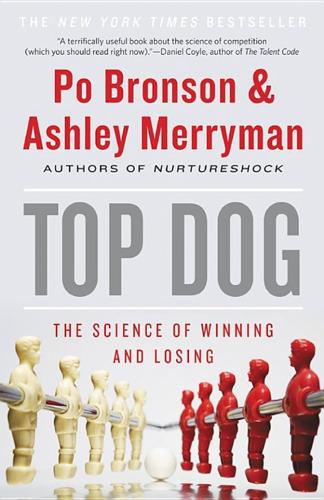
Top Dog: The Science of Winning and Losing
by
Po Bronson
and
Ashley Merryman
Published 19 Feb 2013
Kagel, “Selection Bias, Demographic Effects, and Ability Effects in Common Value Auction Experiments,” American Economic Review, vol. 97(4), pp. 1278–1304 (2007) Cotton, Christopher, Frank McIntyre, & Joseph Price, “Gender Differences in Competition: A Theoretical Assessment of the Evidence,” The Selected Works of Christopher Cotton, http://bit.ly/Q654OM (2011) Dargnies, Marie-Pierre, “Men Too Sometimes Shy Away from Competition: The Case of Team Competition,” http://d.doiorg/102139/ssrn1814989 (2011) Dreber, Anna, Interview with Author (2011) Dreber, Anna, Christer Gerdes, & Patrik Gränsmark, “Beauty Queens and Battling Knights: Risk Taking and Attractiveness in Chess,” IZA Discussion Paper No. 5314, Institute for the Study of Labor (2010) Dreber, Anna, Emma von Essen, & Eva Ranehill, “Outrunning the Gender Gap—Boys and Girls Compete Equally,” Experimental Economics, vol. 14(4), pp. 567–582 (2011) Eckel, Catherine C., & Philip J. Grossman, “Men, Women and Risk Aversion: Experimental Evidence,” In: Charles R. Plott & Vernon L. Smith (Eds.). Handbook of Experimental Economics Results, ch. 113, pp. 1061–1073 (2008) Franken, Robert E., & Douglas J. Brown, “Why Do People Like Competition? The Motivation for Winning, Putting Forth Effort, Improving One’s Performance, Performing Well, Being Instrumental, and Expressing Forceful/Aggressive Behavior,” Personality & Individual Differences, vol. 19(2), pp. 175–184 (1995) Frick, Bernd, “Gender Differences in Competitiveness: Empirical Evidence from Professional Distance Running,” Labour Economics, vol. 18(3), pp. 389–398 (2011) Frick, Bernd, “Gender Differences in Competitive Orientations: Empirical Evidence from Ultramarathon Running,” Journal of Sports Economics, vol. 12(3), pp. 317–340 (2011) Garza, R.
…
Vivekanadndan, & T. D. Spector, “The Big Finger: The Second to Fourth Digit Ratio is a Predictor of Sporting Ability in Women,” British Journal of Sports Medicine, vol. 40(12), pp. 981–983 (2006) Pearson, Matthew, & Burkhard C. Shipper, “The Visible Hand: Finger Ratio (2d:4d) and Competitive Bidding,” Experimental Economics, vol. 15(3), pp. 510–529 (2012) Rustichini, Aldo, Interview with Author (2011) Sandri, Serena, Christian Schade, Oliver Mußhoff, & Martin Odening, “Holding On for Too Long? An Experimental Study on Inertia in Entrepreneurs’ and Non-Entrepreneurs Disinvestment Choices,” SiAg-Working Paper, No. 02 (2009) Schade, Christian, & Sabrina Boewe, “Characterizing the Female Entrepreneur: Comparing Behavior in a Market Entry Experiment with Other Groups of Individuals,” Frontiers of Entrepreneurship Research, vol. 30(8), art. 8. (2010) Stenstrom, Eric, Gad Saad, Marcelo V.
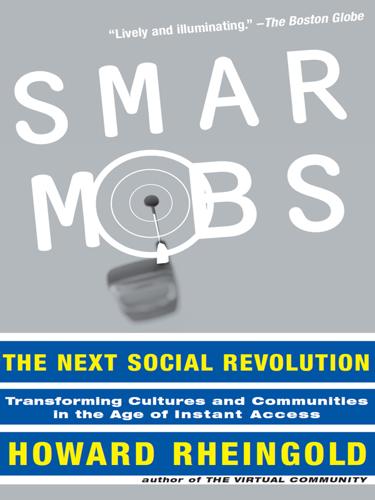
Smart Mobs: The Next Social Revolution
by
Howard Rheingold
Published 24 Dec 2011
Whereas simpler signals and smaller brains could have remained adequate for coordinating the males’ hunting activities, Dunbar proposes they weren’t sufficient for the complicated lists of who did what to whom that could have been the basis for the original proto-human reputation system.39. Research reported in 2002 offers provocative theories about how reputation, altruism, and punishment are structured to support human cooperation. A field now known as “experimental economics” has extended game theory to include two specific “minigames”: the “Ultimatum Game” and the “Public Goods Game.” Research using these games as probes indicate that People tend to exhibit more generosity than a strategy of rational self-interest predicts. People will penalize cheaters, even at some expense to themselves.
…
Because the unlicensed band your cordless phone uses is a little commons,” retorts Dave Hughes, the last guy you’d want to call a communist to his face.80 To complicate the issue, advocates of “open-source software- defined radio” are designing radios that can transmit and receive on any frequency and modulate with any scheme (i.e., AM, FM, spread spectrum), making it far more difficult to regulate devices, since modifications take place only in the software.81 During my journeys into cybersociology, I had discovered Elinor Os-trom’s studies of commons that were not tragically mismanaged and encountered the notion of “public goods” in the experimental economics games probing cooperation. And Lawrence Lessig had referred to an “innovation commons” built into the Internet’s end-to-end architecture. When the same notion showed up in the hot center of policy debate concerning wireless Internet regulation, another conceptual Schelling point in the smart mobs literature revealed itself.
…
Floating above the tear gas was a pulsing infosphere of enormous bandwidth, reaching around the planet via the Internet.18 From Seattle to Manila, the first “netwars” have already broken out. The term “netwar” was coined by John Arquilla and David Ronfeldt, two analysts for the RAND corporation (birthplace of game theory and experimental economics), who noticed that the same combination of social networks, sophisticated communication technologies, and decentralized organizational structure was surfacing as an effective force in very different kinds of political conflict: Netwar is an emerging mode of conflict in which the protagonists—ranging from terrorist and criminal organizations on the dark side, to militant social activists on the bright side—use network forms of organization, doctrine, strategy, and technology attuned to the information age.

A Beautiful Mind
by
Sylvia Nasar
Published 11 Jun 1998
A paper on war games was merely a half-hearted effort, designed to justify his employment at RAND and to be hastily drafted before he returned to Cambridge at the beginning of September.14 But Nash and Milnor did collaborate on one project, an experiment on bargaining involving hired subjects, that was to become, unexpectedly, a much-cited classic.15 The experiment, designed with two researchers from the University of Michigan who were also at RAND for the summer, anticipated by several decades the now-thriving field of experimental economics. The RAND experiments grew more or less directly out of the habit of playing games that the mathematicians indulged in their spare time. Inventing new games and trying them out, always with the inventors as subjects, had been a popular pastime at Princeton. Many of the players had, like Nash, only recently outgrown boyhood passions for chemistry and electricity experiments.
…
For von Neumann’s views, see Clay Blair, Jr., “Passing of a Great Mind,” Life (February 1957), pp. 88–90, as quoted in William Poundstone, Prisoner’s Dilemma, op. cit., p. 143. 17. Arrow, interview. 18. See Poundstone, op. cit.; Joseph Baratta, interview, 8.12.97. 19. Arrow, interview. 20. John H. Kagel and Alvin E. Roth, The Handbook of Experimental Economics (Princeton: Princeton University Press, 1995), pp. 8–9. 21. Albert W. Tucker, interview, 12.94. 22. See, for example, Avinash Dixit and Barry Nalebuff, Thinking Strategically, op. cit. 23. See, for example, Anatole Rappaport, “Prisoner’s Dilemma,” in John Eatwell, Murray Milgate, and Peter Newman, The New Palgrave, op. cit., pp. 199–204. 24.
…
The description of the experiment is based on, apart from the original paper, Evar Nering, professor of mathematics, University of Minnesota, interview, 6.18.96; R. Duncan Luce and Howard Raiffa, Games and Decisions (New York: John Wiley & Sons, 1957), pp. 259–69; John H. Kagel and Alvin E. Roth, The Handbook of Experimental Economics, op. cit., pp. 10–11. 18. Kagel and Roth, op. cit. 19. Milnor, interview, 10.28.94. 20. John Milnor, “A Nobel Prize for John Nash,” op. cit. 21. See, for example, Kagel and Roth, op. cit. 22. Milnor, interview, 1.27.98. 23. Letter from John Nash to John Milnor, 12.27.64. 19: Reds 1.
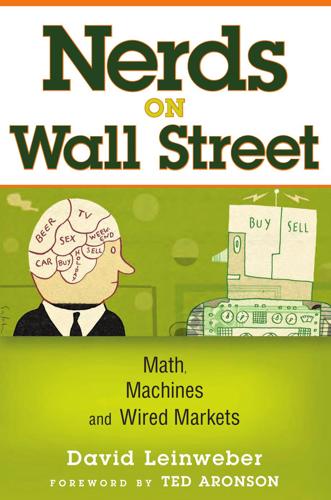
Nerds on Wall Street: Math, Machines and Wired Markets
by
David J. Leinweber
Published 31 Dec 2008
Innovative Abstract Visualizations Experimental markets are a remarkable laboratory technique that allows investigation of markets that would not be possible by observing real financial markets from a distance.Vernon Smith shared the 2002 Nobel Prize in economics for pioneering experimental economics.15 Vernon is also the hands-down winner of the “Nobel laureate who looks most like Willie Nelson” award. Smith’s colleagues can create (and have created) markets that have any degree of transparency they want. They have created automated and semi-automated systems that may give us insight into how we will approach markets technologically in the future. Charles Plott, Smith’s sometime collaborator at Caltech’s Experimental Economics Laboratory, has developed a novel visualization that allows participants to look deeply into the workings of the market.
…
The tree map is still enormously useful for its original purpose—tracking down those files that suddenly take over your disk. A free utility along these lines is Sequoia View, from the computer science department at Eindhove Technical University in the Netherlands (www.win.tue.nl/sequoiaview/). 15. For more on this remarkable story, see Paving Wall Street: Experimental Economics and the Quest for the Perfect Market by Ross Miller ( John Wiley & Sons, 2002). 16. See “Delving Deeper” by David Leinweber, Bloomberg Wealth Manager, October 2003. 17. The Harvard Business School e-Information project at www.people.hbs.edu/ptufano/einfo/ has a nice online collection of these studies. 18.

The Secret of Our Success: How Culture Is Driving Human Evolution, Domesticating Our Species, and Making Us Smarter
by
Joseph Henrich
Published 27 Oct 2015
You could probably get away with this only in a department of anthropology. I had no classes to take, no advisors to work for, and no one really seemed to care what I was doing. I started by going to the library to take out a stack of books. I read books on cognitive psychology, decision-making, experimental economics, biology, and evolutionary psychology. Then I moved to journal articles. I read every article ever written on an economics experiment called the Ultimatum Game, which I’d used during my second and third summers with the Matsigenka. I also read a lot by the psychologists Daniel Kahneman and Amos Tversky, as well as by a political scientist named Elinor Ostrom.
…
Properly interpreted, economic games are valuable tools for measuring social behavior and for teasing apart the complex packages of motivations, understandings, and beliefs that jointly influence decisions. Well-known economic games include the Prisoner’s Dilemma, Ultimatum Game, and Dictator Game. To understand these experiments, imagine this situation: You enter an experimental economics laboratory at Big City University. It’s filled with college-age strangers seated at computer terminals. You are told to sit down at an open terminal, which has partitions that prevent others from seeing your screen. After some preliminaries, the computer screen informs you that your ID has been randomly assigned to interact with another person in the room, but neither you nor this person will ever know the other’s identity.
…
In Tools, Language, and Cognition in Human Evolution, edited by E. R. Gibson and T. Ingold, 230–250. Cambridge: Cambridge University Press. Camerer, C. F. 1989. “Does the basketball market believe in the ‘hot hand’?” American Economic Review 79:1257–61. ———. 1995. “Individual decision making.” In The Handbook of Experimental Economics, edited by J. H. Kagel and A. E. Roth, 587–703. Princeton, NJ: Princeton University Press. Campbell, B. C. 2011. “Adrenarche and middle childhood.” Human Nature 22 (3):327–349. Campbell, D. T. 1965. “Variation and selective retention in socio-cultural evolution.” In Social Change in Developing Areas: A Reinterpretation of Evolutionary Theory, edited by H.

Who Gets What — and Why: The New Economics of Matchmaking and Market Design
by
Alvin E. Roth
Published 1 Jun 2015
Levine, Muriel Niederle, Alvin E. Roth, and John J. Siegfried, “The Job Market for New Economists: A Market Design Perspective,” Journal of Economic Perspectives 24, no. 4 (Fall 2010): 187–206. [>] The experiment allowed: Soohyung Lee and Muriel Niederle, “Propose with a Rose? Signaling in Internet Dating Markets,” Experimental Economics, forthcoming. [>] And the effect of a rose: This turns out to echo the effect of signals that we observe in the economics job market when we use the relative prestige of the university from which the applicant is graduating and the one to which he or she is applying as a measure of desirability.
…
See also college admissions; residency programs for doctors; school matching in democracy, 166 early admissions in, 73–74 exploding offers in, 98–99 marriage age and, 72 Ph.D. offers in, 77–78 public value of, 125 Edwards, Valerie, 130 electronic order books, 83–84 Elias, Julio, 245 email, 169, 175–77 E-mini S&P 500 futures (ES), 82–89 equilibrium, 77 Ethiopia Commodity Exchange, 17–18 experimental economics, 77, 127–28, 176, 209, 244 experiments, 209, 213, 241 expert guides, 147–48 exploding offers, 9–10, 67, 98–99 empowerment of candidates and, 76–80 in gastroenterology fellowships, 76–78 for judicial clerkships, 91–99 in law firm recruiting, 67, 68 to medical residents, 136 for orthopedic surgeon fellows, 78–80 to Ph.D. candidates, 77–78 in school admissions, 73–74 exploitation, 203 failures, market abandonment of, 167 causes vs. symptoms of, 90–98 child marriage and, 70–74 from congestion, 92–93 cultural change and, 78–80 difficulty of limiting, 67–68, 74, 79–80, 90–98 from early transactions, 57–80 exploding offers and, 67–68 finding solutions for, 133–34 in gastroenterology fellowships, 75–78 in judicial clerkships, 69–70, 79, 90–98 in law firm recruiting, 65–68 in orthopedic surgeon hiring, 78–80 prevalence of, 73 safety, trust, and simplicity and, 113–30 self-control and, 67–68, 74–78 from speed, 81–99 fairness, 25 Falke, Roberta, 38–39 Farmer City, Illinois, 115 farmers’ markets, 20, 74 farming, 198 Federal Communications Commission, 186–89 Federal Law Clerk Hiring Plan, 93–98 fellowships, gastroenterology, 75–78 fertility tourism, 201–2 Fiesta Bowl, 61 financial markets, 82–89 flash crash of 2010, 84–85 Fleming, Alexander, 133–34 Florey, Howard, 134 Food Facility Inspection Report, 220–21 Football Bowl Association, 62–63 football bowl games, 59–65 Franklin, Benjamin, 200–201 Fréchette, Guillaume, 64, 237 free markets, 7, 12–13, 217, 226–28.
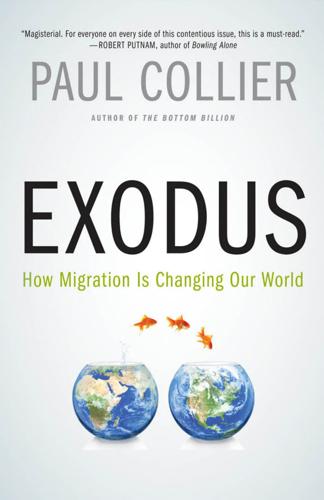
Exodus: How Migration Is Changing Our World
by
Paul Collier
Published 30 Sep 2013
In fancier language, equilibrium is only locally stable. So moderate migration is liable to confer overall social benefits, whereas sustained rapid migration would risk substantial costs. The rest of this chapter substantiates those potential risks. Mutual Regard: Trust and Cooperation Through research in experimental economics we now understand what enables cooperative outcomes to persist. In a sense successful cooperation is a minor miracle, because if almost everyone else is cooperating, whatever is the objective will be achieved even if I don’t help: so why should I incur the costs of helping? In the vicinity of the fully cooperative outcome, each individual has a strong incentive to free ride, so cooperation should usually be unstable.
…
Its foundations were laid by Adam Smith in The Wealth of Nations, where he famously demonstrated that such behavior generates social benefits. But Smith also wrote The Theory of Moral Sentiments, about the foundations of mutual regard. Belatedly, that work is receiving its due recognition.4 It is being expanded by the new subdiscipline of neuroeconomics, in which the regard for others is neurologically grounded.5 Experimental economics has found that a propensity to trust is both valuable and varies between societies. Studies of happiness find that what really matters is social, not material: how we relate to others, and how we are regarded by others. But even judged by the narrow metric of income, a group within which there is high regard and trust for others will be better off than one of selfish individualists.

The Irrational Economist: Making Decisions in a Dangerous World
by
Erwann Michel-Kerjan
and
Paul Slovic
Published 5 Jan 2010
Today, this multidisciplinary field—which brings together economics, neuroscience, psychology, philosophy, sociology, and physics—is offering new empirical and theoretical insights on how emotions and rationality interdependently sha(r)p(en) our decisions. Among the most striking examples are a couple of neuroscientific studies of a familiar experimental economic setting, the Ultimatum Game (UG). The first of these was conducted by scientists at Princeton University in 2003.8 Alan Sanfey, Jonathan Cohen, and colleagues used functional magnetic resonance imaging (fMRI)9 in order to estimate the brain activity that occurs when people decide to accept (or not) an unfair share of money in the UG.10 From a purely rational view, whether a proposition is unfair or not should not make any difference to their decision—they would get more money by accepting than by rejecting it.
…
Camerer, California Institute of Technology Colin Camerer is the Rea and Lela Axline Professor of Business Economics at the California Institute of Technology (located in Pasadena, California), where he teaches cognitive psychology and economics. He earned an MBA in finance and a PhD in decision theory from the University of Chicago Graduate School of Business. Before coming to Caltech in 1994, Professor Camerer worked at the Kellogg, Wharton, and University of Chicago business schools. He studies both behavioral and experimental economics. His most recent books include Behavioral Game Theory (Princeton University Press, 2003), Foundations of Human Sociality, with fourteen co-authors (Oxford University Press, 2004), and Advances in Behavioral Economics, co-edited with George Loewenstein and Matthew Rabin (Princeton University Press, 2004).

A Pelican Introduction Economics: A User's Guide
by
Ha-Joon Chang
Published 26 May 2014
The school thus has a fundamental affinity, and some overlap in membership, with the Institutionalist school. The Behaviouralist school is the youngest of the schools of economics that we have so far examined, but it is older than most people think. The school has recently come to prominence through the fields of behavioural finance and experimental economics. But it has its origins in the 1940s and the 1950s, especially in the works of Herbert Simon (1916–2001), the 1978 Nobel economics laureate.* Limits to human rationality and the need for individual and social rules Simon’s central concept is bounded rationality. He criticizes the Neoclassical school for assuming that people possess unlimited capabilities to process information, or God-like rationality (he calls it ‘Olympian rationality’).
…
Focusing too much at this ‘micro’ level, the school often loses sight of the bigger economic system. This does not have to be; after all, Simon wrote a lot about the economic system. But most members of the school have focused too much on individuals – especially those economists who are engaged in experimental economics (trying to establish whether people are rational and selfish through controlled experiments) or neuroeconomics (trying to establish links between brain activities and particular types of behaviour). It also needs to be added that, given its focus on human cognition and psychology, the Behaviouralist school has few things to say about issues of technology and macroeconomics.
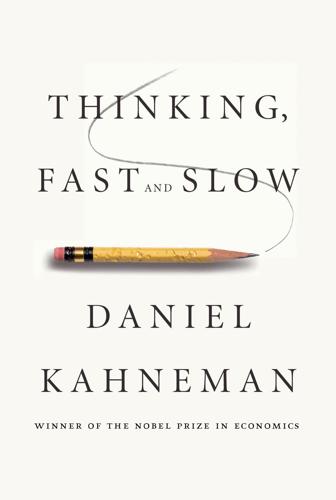
Thinking, Fast and Slow
by
Daniel Kahneman
Published 24 Oct 2011
Your leisure time and the standard of living that your income supports are also not intended for sale or exchange. Knetsch, Thaler, and I set out to design an experiment that would highlight the contrast between goods that are held for use and for exchange. We borrowed one aspect of the design of our experiment from Vernon Smith, the founder of experimental economics, with whom I would share a Nobel Prize many years later. In this method, a limited number of tokens are distributed to the participants in a “market.” Any participants who own a token at the end Bon s A end Bon of the experiment can redeem it for cash. The redemption values differ for different individuals, to represent the fact that the goods traded in markets are more valuable to some people than to others.
…
That’s perfectly natural, but the result is that the organization is not taking enough risk.” Keeping Score Except for the very poor, for whom income coincides with survival, the main motivators of money-seeking are not necessarily economic. For the billionaire looking for the extra billion, and indeed for the participant in an experimental economics project looking for the extra dollar, money is a proxy for points on a scale of self-regard and achievement. These rewards and punishments, promises and threats, are all in our heads. We carefully keep score of them. They shape o C Th5ur preferences and motivate our actions, like the incentives provided in the social environment.
…
clean up their portfolios: Lilian Ng and Qinghai Wang, “Institutional Trading and the Turn-of-the-Year Effect,” Journal of Financial Economics 74 (2004): 343–66. loss averse for aspects of your life: Tversky and Kahneman, “Loss Aversion in Riskless Choice.” Eric J. Johnson, Simon Gächter, and Andreas Herrmann, “Exploring the Nature of Loss Aversion,” Centre for Decision Research and Experimental Economics, University of Nottingham, Discussion Paper Series, 2006. Edward J. McCaffery, Daniel Kahneman, and Matthew L. Spitzer, “Framing the Jury: Cognitive Perspectives on Pain and Suffering,” Virginia Law Review 81 (1995): 1341–420. classic on consumer behavior: Richard H. Thaler, “Toward a Positive Theory of Consumer Choice,” Journal of Economic Behavior and Organization 39 (1980): 36–90.
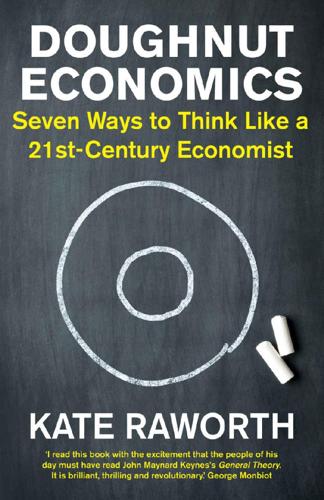
Doughnut Economics: Seven Ways to Think Like a 21st-Century Economist
by
Kate Raworth
Published 22 Mar 2017
Bowles, S. and Gintis, H. (2011) A Cooperative Species: Human Reciprocity and Its Evolution. Princeton, NJ: Princeton University Press, p. 20. 24. Helbing, D. (2013) ‘Economics 2.0: the natural step towards a self-regulating, participatory market society’, Evolutionary and Institutional Economics Review, 10: 1, pp. 3–41. 25. Kagel, J. and Roth, A. (1995) The Handbook of Experimental Economics, Princeton, NJ: Princeton University Press pp. 253–348, cited in Beinhocker, E. (2007) The Origin of Wealth, London: Random House, p. 120. 26. Henrich, J. et al. (2001) ‘In search of Homo Economicus: behavioral experiments in 15 small-scale societies’, Economics and Social Behavior, 91: 2, pp. 73–78. 27.
…
Jensen, K., Vaish, A. and Schmidt, M. (2014) ‘The emergence of human prosociality: aligning with others through feelings, concerns, and norms’, Frontiers in Psychology 5, p. 822. Jevons, W. S. (1871) The Theory of Political Economy, Library of Economics and Liberty, http://www.econlib.org/library/YPDBooks/Jevons/jvnPE.html Kagel, J. and Roth, A. (1995) The Handbook of Experimental Economics. Princeton, NJ: Princeton University Press. Keen, S. (2011) Debunking Economics. London: Zed Books. Kelly, M. (2012) Owning our Future: The Emerging Ownership Revolution. San Francisco: Berrett-Koehler. Kennedy, P. (1989) The Rise and Fall of World Powers. New York: Vintage Books. Kerr, J. et al. (2012) ‘Prosocial behavior and incentives: evidence from field experiments in rural Mexico and Tanzania’, Ecological Economics 73, pp. 220–227.
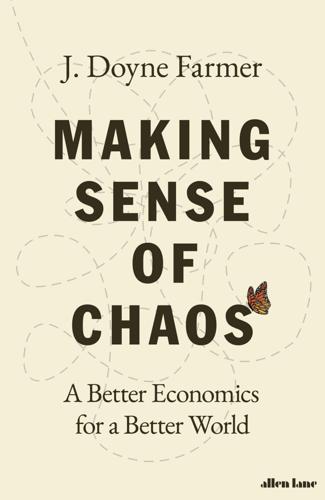
Making Sense of Chaos: A Better Economics for a Better World
by
J. Doyne Farmer
Published 24 Apr 2024
His experiments made it clear that markets converge to equilibrium in some situations but not in others.14 Experimental economics has been used to indicate when and how the economic behavior of Homo sapiens departs from that of Homo economicus. Not surprisingly, economics experiments were initially highly controversial. Were the rewards large enough to be meaningful? Would people really behave in the real world as they did in the laboratory? Despite the initial resistance, experimental economics and behavioral economics slowly entered the mainstream. Kahneman and Smith shared the Nobel Prize in economics in 2002, and Thaler was awarded it in 2017.
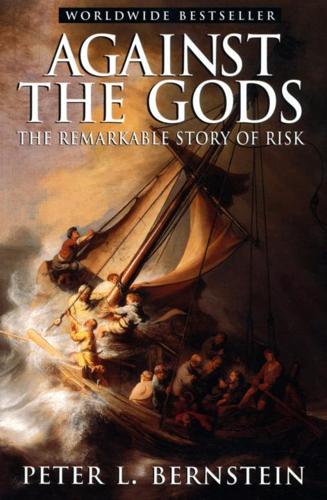
Against the Gods: The Remarkable Story of Risk
by
Peter L. Bernstein
Published 23 Aug 1996
De Moivre first conceived of the bell curve by writing equations on a piece of paper, not, like Quetelet, by measuring the dimensions of soldiers. But Galton conceived of regression to the mean-a powerful concept that makes the bell curve operational in many instances-by studying sweetpeas and generational change in human beings; he came up with the theory after looking at the facts. Alvin Roth, an expert on experimental economics, has observed that Nicholas Bernoulli conducted the first known psychological experiment more than 250 years ago: he proposed the coin-tossing game between Peter and Paul that guided his uncle Daniel to the discovery of utility.26 Experiments conducted by von Neumann and Morgenstern led them to conclude that the results "are not so good as might be hoped, but their general direction is correct."'-' The progression from experiment to theory has a distinguished and respectable history.
…
"More Casinos, More Players Who Bet Until They Lose All." The New York Times, September 25, p. Al. Jones, Charles P., and Jack W. Wilson, 1995. "Probability Estimates of Returns from Common Stock Investing." Journal of Portfolio Management, Vol. 22, No. 1 (Fall), pp. 21-32. Kagel, John H., and Alvin E. Roth, eds., 1995. The Handbook of Experimental Economics. Princeton, New Jersey: Princeton University Press. Kahneman, Daniel, and Amos Tversky, 1979. "Prospect Theory: An Analysis of Decision under Risk." Econometrica, Vol. 47, No. 2, pp. 263-291.` Kahneman, Daniel, and Amos Tversky, 1984. "Choices, Values, and Frames." American Psychologist, Vol. 39, No. 4 (April), pp. 342-347.
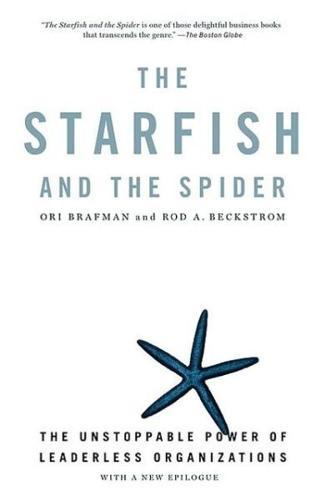
The Starfish and the Spider: The Unstoppable Power of Leaderless Organizations
by
Ori Brafman
and
Rod A. Beckstrom
Published 4 Oct 2006
SOURCES CHAPTER 7: The Combo Special: The Hybrid Organization EClass229 still offers unbelievable bargains for designer clothing. Since our coup with the Zegna suits, we've recommended it to all our friends. The value of positive feedback on eBay is explained in Paul Resnick, Richard Zeckhauser, John Swanson, and Kate Lockwood, "The Value of Reputation on eBay: A Controlled Experiment," Experimental Economics (forthcoming). A comprehensive overview of Google's history can be found in John Battelle's The Search—How Google and Its Rivals Rewrote the Rules of Business and Transformed Our Culture (New York: Portfolio, 2005). The story of IBM's decision to give away its software is told by David Kirkpatrick in "Giving to Get More: IBM Shares Its Secrets," Fortune (August 22, 2005).
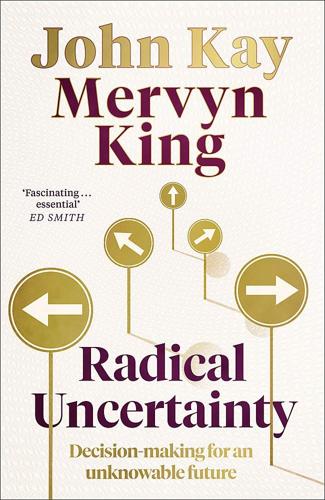
Radical Uncertainty: Decision-Making for an Unknowable Future
by
Mervyn King
and
John Kay
Published 5 Mar 2020
Most of the observed ‘biases’ in behavioural economics are not the result of errors in beliefs or logic, although some are. Most are the product of a reality in which decisions must be made in the absence of a precise and complete description of the world in which people live, in contrast to the small worlds in which the students whose choices are studied in experimental economics are asked to participate. In those latter exercises, there is always something which the experimenters think is the ‘right’ answer. Kahneman uses as an example of bias a drawing similar to the image on page 142. 14 His subjects are asked to judge which of the three figures on the page is the largest, and most choose the one furthest back.
…
Economists frequently derive their findings from large data sets. One major study was able to replicate fewer than one half of published results, even with assistance from the authors and use of the same data employed by these authors. 18 A smaller study of experimental findings in economics found that around 60% of results could be replicated. 19 But experimental economics, unusually, is economic research under laboratory conditions; it involves asking subjects questions like ‘How often does the letter K appear in a text?’ The percentage of results that would have been reproduced successfully would certainly have been much lower if the same conjectured ‘bias’ had been investigated in a different experiment.
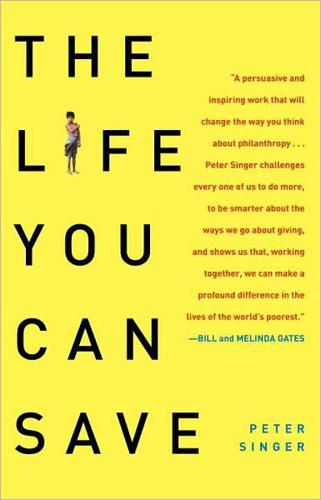
Life You Can Save: Acting Now to End World Poverty
by
Peter Singer
Published 3 Mar 2009
Jen Shang and Rachel Croson, “Field Experiments in Charitable Contribution: The Impact of Social Influence on the Voluntary Provision of Public Goods,” The Economic Journal, forthcoming. Renewing members gave 43 percent more when they were given the appropriate information, and new members 29 percent more. For the mail survey, see Rachel Croson and Jen Shang, “The Impact of Downward Social Information on Contribution Decision,” Experimental Economics 11 (2008), pp. 221—33. 4. Matthew 6:1. 5. Charles Isherwood, “The Graffiti of the Philanthropic Class,” The New York Times, December 2, 2007. 6. www.boldergiving.org. 7. Plan International, “Sponsor a Child: Frequently Asked Questions,” www.plan-international.org/sponsorshipform/sponsorfaq/, accessed January 16, 2008. 8.
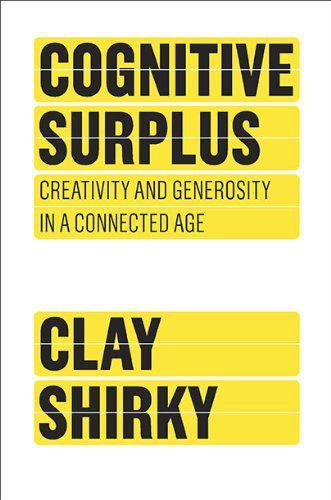
Cognitive Surplus: Creativity and Generosity in a Connected Age
by
Clay Shirky
Published 9 Jun 2010
Stahl, “The Actual Structure of eBay’s Feedback Mechanism and Early Evidence on the Effects of Recent Changes,” International Journal of Electronic Business 7.3 (2009): 301-20. 177 an 8 percent premium on price: Paul Resnick published these findings with his coauthors Richard Zeckhauser, John Swanson, and Kate Lockwood, in “The Value of Reputation on eBay: A Controlled Experiment,” Experimental Economics 9.2 (2006): 79-101. 179 added a fake quote to composer Maurice Jarre’s Wikipedia page: Shawn Pogatchnik discussed Fitzgerald’s actions in “Student Hoaxes World’s Media on Wikipedia,” MSNBC, May 12, 2009, http://www.msnbc.msn.com/id/30699302 (accessed January 10, 2010). CHAPTER 7: Looking for the Mouse 185 notes in his book The Success of Open Source: Steven Weber, The Success of Open Source (Cambridge, MA: Harvard University Press, 2005): 272. 188 He got a loan to enter the indulgence-printing business: The British Library discusses Gutenberg’s printing of indulgences in its documentation of Gutenberg’s Bible: http://www.bl.uk/treasures/gutenberg/indulgences.html (accessed January 9, 2010). 188 John Tetzel, the head pardoner for German territories: Tetzel’s place in history was largely secured by Martin Luther’s objections to indulgences in 1517, but his name recently reappeared when the Catholic Church brought back indulgences in 2008; in discussing this change, John Allen references Tetzel’s phrase in the Room for Debate blog, http://roomfordebate.blogs.nytimes.com/2009/02/13/sin-and-its-indulgences (accessed January 7, 2010). 190 As Elizabeth Eisenstein notes in The Printing Press as an Agent of Change: Elizabeth Eisenstein, The Printing Press as an Agent of Change: Communications and Cultural Transformations in Early-Modern Europe (Cambridge, U.K.: Cambridge University Press, 1980). 192 a computer system called PLATO: Elisabeth Van Meer discusses this history in “PLATO: From Computer-Based Education to Corporate Social Responsibility,” Iterations: An Interdisciplinary Journal of Software History (2003): 6-22. 196 “The behavior you’re seeing is the behavior you’ve designed for”: Joshua Porter, “The Behavior You’re Seeing Is the Behavior You’ve Designed For,” Bokardo, July 28, 2009, http://bokardo.com/archives/the-behavior-youve-designed-for (accessed January 10, 2010). 203 One of the most parsimonious examples of this pattern on the web is from JavaRanch: “Be Nice,” JavaRanch, http://faq.javaranch.com/java/BeNice (accessed January 10, 2010). 203 it sometimes upgraded its software every half hour: Nisan Gabbay, “Flickr Case Study: Still About Tech for Exit?”
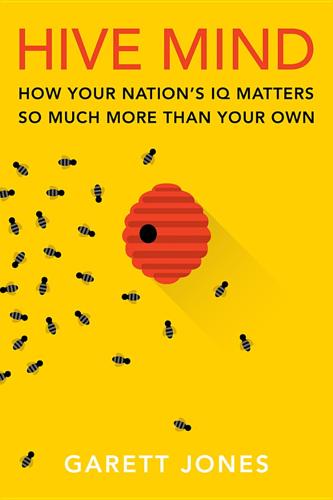
Hive Mind: How Your Nation’s IQ Matters So Much More Than Your Own
by
Garett Jones
Published 15 Feb 2015
Caplan, Bryan, and Stephen C. Miller. “Intelligence Makes People Think Like Economists: Evidence from the General Social Survey.” Intelligence 38, no. 6 (2010): 636–647. Chaudhuri, Ananish. “Sustaining Cooperation in Laboratory Public Goods Experiments: A Selective Survey of the Literature.” Experimental Economics (2011). Christiakis, Nicholas, and James Fowler. Connected: How Your Friends’ Friends’ Friends Affect Everything You Feel, Think, or Do. New York: Little, Brown, 2011. Covey, Steven. The Seven Habits of Highly Effective People: Anniversary Edition. New York: Simon & Schuster, 2013. Cowen, Tyler.

The Captured Economy: How the Powerful Enrich Themselves, Slow Down Growth, and Increase Inequality
by
Brink Lindsey
Published 12 Oct 2017
Alas, since rapid price increases based on fundamentals happen all the time, it’s never clear that a bubble has occurred until after it’s over—which is why people are fooled by them, again and again. Asset bubbles are a glitch inherent in markets. Vernon Smith, the Nobel Prize–winning pioneer in experimental economics, has demonstrated this in a lab setting where groups of experimental subjects tasked with trading an asset will regularly inflate bubbles.16 However, bubbles are more than a market failure; they are a human failure. The very same herd mentality that sweeps market participants into a speculative mania can extend to government regulators as well.
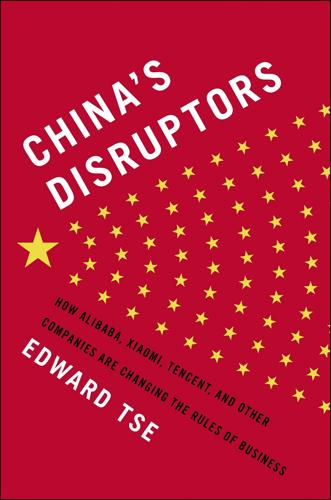
China's Disruptors: How Alibaba, Xiaomi, Tencent, and Other Companies Are Changing the Rules of Business
by
Edward Tse
Published 13 Jul 2015
Following Mao’s death in 1976, his successors recognized that his repressive policies could not be sustained, even if they wanted to see them continue. A five-day meeting of the Communist Party’s Central Committee in December 1978 led to the release of energy pent up in the preceding decades. Gathered at a hotel in west Beijing, the committee agreed to allow experimental economic reforms that would tentatively allow market forces once again to operate in China. The primary leader of this reform movement was Deng Xiaoping, chairman of the party’s Central Advisory Committee. Deng had been in party leadership positions since the 1960s, always advocating for (and sometimes overseeing) economic reforms.

Spite: The Upside of Your Dark Side
by
Simon McCarthy-Jones
Published 12 Apr 2021
Zettler, “The Dark Core of Personality,” Psychological Review 125, no. 5 (2018): 656–688. 63. M. Ridley, The Rational Optimist: How Prosperity Evolves (London: Fourth Estate, 2010), 86. 64. H. Oosterbeek, R. Sloof, and G. Van De Kuilen, “Cultural Differences in Ultimatum Game Experiments: Evidence from a Meta-analysis,” Experimental Economics 7, no. 2 (2004): 171–188. 2. Counterdominant Spite 1. C. Boehm, Moral Origins: The Evolution of Virtue, Altruism, and Shame (New York: Soft Skull Press, 2012). 2. Boehm, Moral Origins. 3. Again, more correctly, they will not tolerate men trying to dominate other men. 4. Lee, as cited in Boehm, Moral Origins, 44. 5.
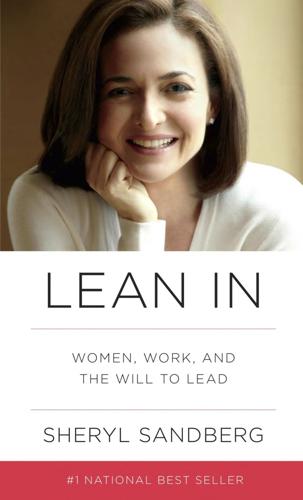
Lean In: Women, Work, and the Will to Lead
by
Sheryl Sandberg
Published 11 Mar 2013
Orley Ashenfelter and David Card (Amsterdam: North Holland, 2010), 1544–90; Rachel Croson and Uri Gneezy, “Gender Differences in Preferences,” Journal of Economic Literature 47, no. 2 (2009): 448–74; and Catherine C. Eckel and Phillip J. Grossman, “Men, Women, and Risk Aversion: Experimental Evidence,” in Handbook of Experimental Economics Results, vol. 1, ed. Charles R. Plott and Vernon L. Smith (Amsterdam: North Holland, 2008), 1061–73. 3. Centers for Disease Control and Prevention, Drowning Risks in Natural Water Settings, http://www.cdc.gov/Features/dsDrowningRisks/. 4. Karen S. Lyness and Christine A. Schrader, “Moving Ahead or Just Moving?
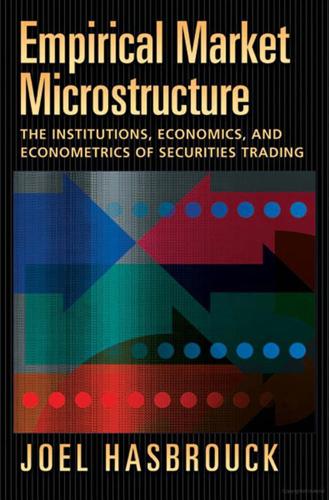
Empirical Market Microstructure: The Institutions, Economics and Econometrics of Securities Trading
by
Joel Hasbrouck
Published 4 Jan 2007
Ronen, Tavy, 1998, Trading structure and overnight information: A natural experiment from the Tel-Aviv Stock Exchange, Journal of Banking and Finance 22, 489–512. Ross, Sheldon M., 1996, Stochastic Processes (John Wiley, New York). Roth, Alvin E., 1995, Bargaining experiments, in John H. Kagel, and Alvin E. Roth, eds., The Handbook of Experimental Economics (Princeton University Press, Princeton, NJ). Roth, Alvin E., and Axel Ockenfels, 2002, Last-minute bidding and the rules for ending second-price auctions: Evidence from eBay and Amazon auctions on the internet, American Economic Review 92, 1093–103. Rubinstein, Ariel, 1982, Perfect equilibrium in a bargaining model, Econometrica 50, 97–110.
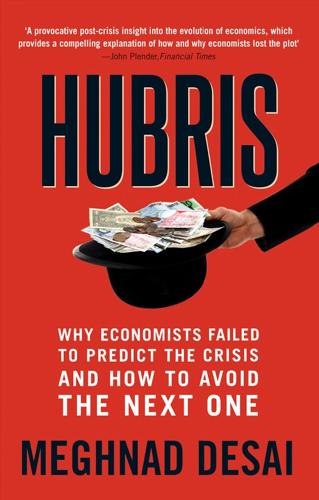
Hubris: Why Economists Failed to Predict the Crisis and How to Avoid the Next One
by
Meghnad Desai
Published 15 Feb 2015
Gordon Brown, on taking office as Chancellor in the New Labour government in 1997, immediately gave the Bank of England autonomy in determining interest rates in pursuit of an inflation target. We had come a long way from the euthanasia of the rentier. Economists do not do fieldwork as anthropologists do, nor do they, on the whole, experiment in a laboratory as natural scientists do. There is a branch called “experimental economics” but it has not changed the nature of the subject to any great extent. But economists do confront published data. The time series of data on income, consumption, investment and so forth are available on an annual or quarterly basis. Economists model them using statistical techniques, like the models Klein built for the US economy.

The Spirit Level: Why Greater Equality Makes Societies Stronger
by
Richard Wilkinson
and
Kate Pickett
Published 1 Jan 2009
Visible even in young children, our concern for fairness sometimes seems so strong that we might wonder how it is that social systems with great inequality are tolerated. Similarly, the sense of indebtedness (now recognized as universal in human societies) which we experience after having received a gift, serves to prompt reciprocity and prevent freeloading, so sustaining friendship. As the experimental economic games which we discussed showed, there is also evidence that we can feel sufficiently infuriated by unfairness that we are willing to punish, even at some personal cost to ourselves. Another characteristic which is perhaps important is our tendency to feel a common sense of identity and interdependence with those with whom we share food and other resources as equals.
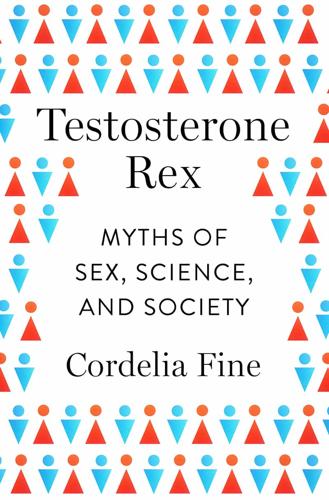
Testosterone Rex: Myths of Sex, Science, and Society
by
Cordelia Fine
Published 13 Jan 2017
However, the high- and low-risk packs are equated overall for frequency of reward and punishment. 32. Holt, C. A., & Laury, S. K. (2002). Risk aversion and incentive effects. American Economic Review, 92(5), 1644–1655. See also Harbaugh, W., Krause, K., & Vesterlund, L. (2002). Risk attitudes of children and adults: Choices over small and large probability gains and losses. Experimental Economics, 5(1), 53–84. This study presented participants from ages 5 to 64 years with gambles involving “real and salient payoffs” (p. 55). The authors note “While many other researchers have found that men are less risk averse than women, with this protocol we find no evidence to support gender differences in risk behavior or in probability weighting, either in children or in adults.”
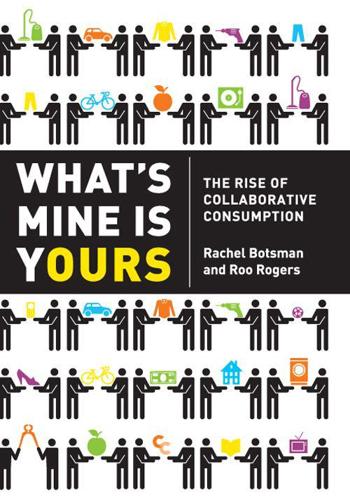
What's Mine Is Yours: How Collaborative Consumption Is Changing the Way We Live
by
Rachel Botsman
and
Roo Rogers
Published 2 Jan 2010
ndmViewId=news_view&newsId=20090304005278&newsLang=en. 19. Christoph Uhlhaas, “Is Greed Good?” Scientific American Mind (August/September 2007), www.sciamdigital.com/index.cfm?fa=Products.ViewIssuePreview&ARTICLEID_CHAR=0950A3EC-3048-8A5E-10BB9808E7E70922. 20. P. Resnick et al., “The Value of Reputation on eBay: A Controlled Experiment,” Experimental Economics 9, no. 2 (2006): 79–101. 21. Bart Wilson, “Fair’s Fair,” Atlantic (January 25, 2009), http://business.theatlantic.com/2009/01/fairs_fair.php. 22. Jonah Lehrer, The Decisive Moment (Text Publishing Company, 2009), 176. 23. Uhlhaas, “Is Greed Good?” 24. Christian Mayer, “Playing Games,” Max Planck Research (January 2003), www.mpg.de/english/illustrationsDocumentation/multimedia/mpResearch/2003/heft01/1_03MPR_64_69.pdf. 25.

Average Is Over: Powering America Beyond the Age of the Great Stagnation
by
Tyler Cowen
Published 11 Sep 2013
For the tale of Cambry, see David Gelles, “Inside Match.com,” Financial Times, July 29, 2011; this source also has the information on conservatives and liberals and the New Jersey anecdote. For cognitive biases, see http://en.wikipedia.org/wiki/List_of_cognitive_biases. For the pointer about experimental economics I am indebted to Amihai Glazer. In addition to Ken Regan, for another look at using computers to measure the quality of human play, see Matej Guid, “Search and Knowledge for Human and Machine Problem Solving,” doctoral dissertation, University of Ljubljana, 2010, http://eprints.fri.uni-lj.si/1113/1/Matej__Guid.disertacija.pdf.

Big Business: A Love Letter to an American Anti-Hero
by
Tyler Cowen
Published 8 Apr 2019
The relative “cheating factor” is about 6 to 1, with more of the cheating done on the personal income tax. In terms of those simple proportions, individuals would appear to cheat more on their taxes than businesses do.12 CEOS IN LABORATORY GAMES Ernst Fehr and John A. List, two of the best known economists in the field of experimental economics, set up what is called a “trust game” and compared the performance of CEOs to non-CEOs. The results were pretty straightforward: the CEOs both were more trusting of others and exhibited more trustworthiness themselves.13 The experiments used a modified version of the traditional trust game, which is one means of measuring how much trust exists between individuals.

You Are Not So Smart
by
David McRaney
Published 20 Sep 2011
Thornberg, R., & Knutsen, M. A. (2010). Teenagers’ explanations of bullying. Child and Youth Care Forum. DOI 10.1007/s10566-010 -9129-z. The Public Goods Game Ariely, D. (2008). Predictably irrational: The hidden forces that shape our decisions. New York: Harper. Davis, D. D., & Holt, C. A. (1992). Experimental economics. Princeton, N.J.: Princeton University Press. Hardin, G. (1998, May 1). Extensions of “The Tragedy of the Commons.” Science 280(5364), 682–683. The Ultimatum Game Crockett, M. J., Clark, L., Tabibnia, G., Lieberman, M. D., & Robbins, T. W. (2008, June). Serotonin modulates behavioral reactions to unfairness.
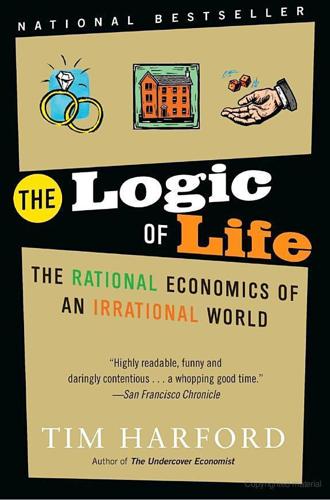
The Logic of Life: The Rational Economics of an Irrational World
by
Tim Harford
Published 1 Jan 2008
Detailed studies of the winner’s curse include Douglas Dyer and John Kagel, “Bidding in Common Value Auctions: How the Commercial Construction Industry Corrects for the Winner’s Curse,” Management Science 42 (1996): 143–76; James Cox, Sam Dinkin, and James Swarthout, “Endogenous Entry and Exit in Common Value Auctions,” Experimental Economics 4, no. 2(October 2001): 163–81; and Glenn Harrison and John List, “Naturally Occurring Markets and Exogenous Laboratory Experiments: A Case Study of Winner’s Curse,” UCF Working Paper, 2005. Camp David: The story is told in Fred Kaplan’s history, The Wizards of Armageddon (New York: Simon & Schuster, 1983), and Robert Dodge’s biography of Schelling, The Strategist (Hollis, N.H.: Hollis, 2006).
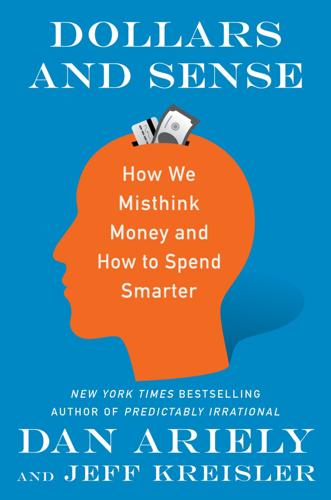
Dollars and Sense: How We Misthink Money and How to Spend Smarter
by
Dr. Dan Ariely
and
Jeff Kreisler
Published 7 Nov 2017
Dan Ariely (Duke University), Predictably Irrational (New York: HarperCollins, 2008). CHAPTER 8: WE OVERVALUE WHAT WE HAVE 1. Daniel Kahneman (Princeton), Jack L. Knetsch (Simon Fraser University), and Richard H. Thaler (University of Chicago), “The Endowment Effect: Evidence of Losses Valued More than Gains,” Handbook of Experimental Economics Results (2008). 2. Michael I. Norton (Harvard Business School), Daniel Mochon (University of California, San Diego), and Dan Ariely (Duke University), “The IKEA Effect: When Labor Leads to Love,” Journal of Consumer Psychology 22, no. 3 (2012): 453-460. 3. Ziv Carmon (INSEAD) and Dan Ariely (MIT), “Focusing on the Forgone: How Value Can Appear So Different to Buyers and Sellers,” Journal of Consumer Research 27, no. 3 (2000): 360–370. 4.

Late Bloomers: The Power of Patience in a World Obsessed With Early Achievement
by
Rich Karlgaard
Published 15 Apr 2019
Arkes and Catherine Blumer, “The Psychology of Sunk Cost,” in Judgment and Decision Making: An Interdisciplinary Reader, ed. Terry Connolly, Hal R. Arkes, and Kenneth R. Hammond, 2nd ed. (New York: Cambridge University Press, 2000). The sunk-cost fallacy is: Daniel Friedman et al., “Searching for the Sunk Cost Fallacy,” Experimental Economics 10, no. 1 (2007): 79–104. opportunity cost: John W. Payne, James R. Bettman, and Mary Frances Luce, “When Time Is Money: Decision Behavior Under Opportunity-Cost Time Pressure,” Organizational Behavior and Human Decision Processes 66, no. 2 (1996): 131–52; Robert Kurzban et al., “An Opportunity Cost Model of Subjective Effort and Task Performance,” Behavioral and Brain Sciences 36, no. 6 (2013): 661–79.
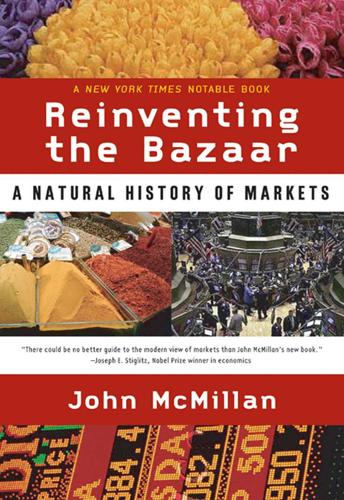
Reinventing the Bazaar: A Natural History of Markets
by
John McMillan
Published 1 Jan 2002
If there are unfilled jobs for barrel scrapers, the employers raise the offered wage, people change their jobs in response, and the vacancies get filled. With a price system, unlike under central planning, no central authority needs to know when there is an imbalance of supply and demand. Evidence that price movements can guide an economy to a stable outcome comes from experimental economics, in research done by Vernon Smith and others.12 An economy is simulated in the laboratory, with experimental subjects, usually undergraduate students, being put in the role of consumers and firms (and to get them to take their decision-making seriously, they are offered cash payments based on the outcomes of their decisions).

Calling Bullshit: The Art of Scepticism in a Data-Driven World
by
Jevin D. West
and
Carl T. Bergstrom
Published 3 Aug 2020
Glenn Begley and Lee Ellis reported that scientists working in a commercial lab were able to reproduce only 6 of 53 important cancer biology studies published in the recent scientific literature. Shortly thereafter, the Open Science Collaboration—a large-scale collective effort among dozens of researchers—reported that they were able to replicate only 39 out of 100 high-profile experiments in social psychology. In experimental economics, meanwhile, a similar effort was under way. One study revealed that only 11 of 18 experimental papers published in the very best economics journals could be replicated. Was science, one of our most trusted institutions, somehow generating inadvertent bullshit on a massive scale? And if so, why?
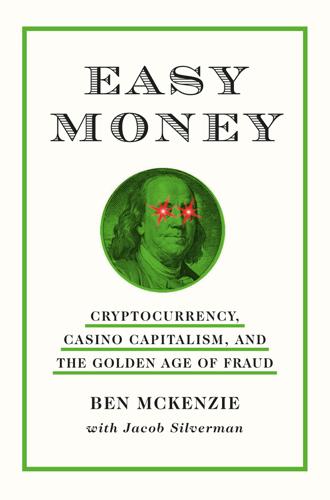
Easy Money: Cryptocurrency, Casino Capitalism, and the Golden Age of Fraud
by
Ben McKenzie
and
Jacob Silverman
Published 17 Jul 2023
Binance probably faced significant legal headwinds, but it had developed a distributed—and mostly unaccountable—corporate structure that would be the envy of any offshore financial concern. It was hard to see how this “democratization of finance” was going to lead to a fairer economy rather than a more chaotic one, with a vast gulf between winners and losers. The liberatory rhetoric and experimental economics of crypto could be alluring, but they amplified many of the worst qualities of our existing capitalist system while privileging a minority group of early adopters and well-connected insiders. Binance exemplified the worst of these excesses. It was a premiere operator in an industry that prided itself in risk-taking and constantly “building,” although it seemed to be building little more than a better mousetrap

Superminds: The Surprising Power of People and Computers Thinking Together
by
Thomas W. Malone
Published 14 May 2018
Aggarwal, “Cognitive Diversity”; John B. Van Huyck, Raymond C. Battalio, and Richard O. Beil, “Tacit Coordination Games, Strategic Uncertainty, and Coordination Failure,” The American Economic Review 80, no. 1 (1990): 234–48; Cary Deck and Nikos Nikiforakis, “Perfect and Imperfect Real-Time Monitoring in a Minimum-Effort Game,” Experimental Economics 15, no. 1 (2012): 71–88. 16. Figure from Aggarwal, “Cognitive Diversity,” 2015. Reprinted by permission of authors. 17. David Engel, Anita Williams Woolley, Ishani Aggarwal, Christopher F. Chabris, Masamichi Takahashi, Keiichi Nemoto, Carolin Kaiser, Young Ji Kim, and Thomas W. Malone, “Collective Intelligence in Computer-Mediated Collaboration Emerges in Different Contexts and Cultures,” Proceedings of the SIGCHI Conference on Human Factors in Computing Systems (New York: Association for Computing Machinery, 2015), doi:10.1145/2702123.2702259 (conference held in Seoul, South Korea, April 18–23, 2015). 18.

Drunk: How We Sipped, Danced, and Stumbled Our Way to Civilization
by
Edward Slingerland
Published 31 May 2021
“Lost in the storm: The academic collaborations that went missing in hurricane ISAAC.” Economic Journal, 128(610), 995–1018. Camus, Albert. (1955). The Myth of Sisyphus and Other Essays (Justin O’Brien, Trans.). New York: Vintage. Capraro, Valerio, Jonathan Schulz, and David G. Rand. (2019). “Time pressure and honesty in a deception game.” Journal of Behavioral and Experimental Economics, 79, 93–99. Carhart-Harris, R. L., and K. J. Friston. (2019). “REBUS and the anarchic brain: Toward a unified model of the brain action of psychedelics.” Pharmacological Reviews, 71, 316–344. 10.1124/pr.118.017160. Carmody, S., J. Davis, S. Tadi, J. S. Sharp, R. K. Hunt, and J. Russ. (2018).
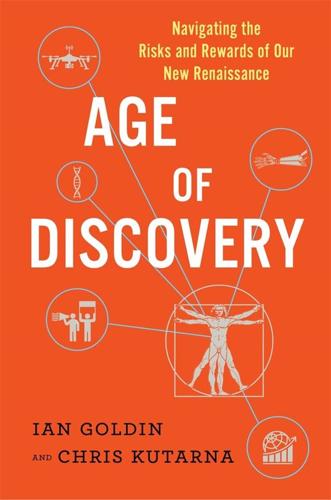
Age of Discovery: Navigating the Risks and Rewards of Our New Renaissance
by
Ian Goldin
and
Chris Kutarna
Published 23 May 2016
Brynjolfsson, Erik and Andrew McAfee (2014). The Second Machine Age: Work, Progress, and Prosperity in a Time of Brilliant Technologies. New York: W.W. Norton & Company. 46. Chen, Yan, Grace Young, et al. (2013). “A Day without a Search Engine: An Experimental Study of Online and Offline Searches.” Experimental Economics 14(4): 512–536; Brynjolfsson, Erik and Andrew McAfee (2014). The Second Machine Age: Work, Progress, and Prosperity in a Time of Brilliant Technologies. New York: W.W. Norton & Company. 47. Metcalfe, Robert (1995, December 4). “Predicting the Internet’s Catastrophic Collapse and Ghost Sites Galore in 1996.”
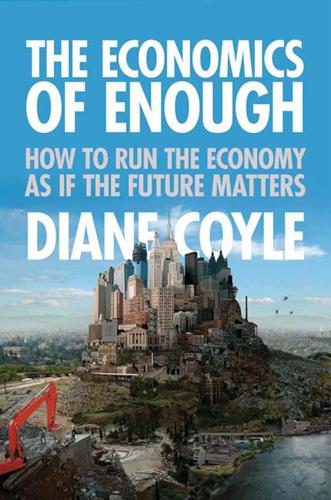
The Economics of Enough: How to Run the Economy as if the Future Matters
by
Diane Coyle
Published 21 Feb 2011
Payback: Debt and the Shadow Side of Wealth. London: Bloomsbury. Baker, Dean. 2010. Taking Economics Seriously. Cambridge, MA: MIT Press. Barber, Benjamin R. 2009. “A Revolution in Spirit.” The Nation, 22 January. Bardsley, Nicholas, Robin Cubitt, Graham Loomes, Peter Moffatt, Chris Starmer, and Robert Sugden, eds. 2009. Experimental Economics: Rethinking the Rules. Princeton: Princeton University Press. Barrington-Leigh, Christopher, Anthony Harris, John Haltiwanger, and Haifang Huang. 2010. “International Evidence on the Social Context of Well-being.” VoxEU, 24 April, http//www.voxeu.org. Barro, Robert J. 2000. “Inequality and Growth in a Panel of Countries.”

The Future Is Faster Than You Think: How Converging Technologies Are Transforming Business, Industries, and Our Lives
by
Peter H. Diamandis
and
Steven Kotler
Published 28 Jan 2020
Chapter Four: The Acceleration of Acceleration Force #1: Saved Time In “The Original Macintosh”: Andy Hertzfeld, “Saving Lives,”Folklore.com, August 1983. See: https://www.folklore.org/StoryView.py?story=Saving_Lives.txt. University of Michigan behavioral economist Yan Chen: Yan Chen, “A Day Without a Search Engine: An Experimental Study of Online and Offline Searches,” Experimental Economics 17, no. 4 (December 2014): 512–536. See: https://link.springer.com/article/10.1007/s10683-013-9381-9. Over the past hundred years, labor-saving devices: University of Montreal, “Fridges and Washing Machines Liberated Women, Study Suggests,” Science Daily, March 13, 2009. See: https://www.sciencedaily.com/releases/2009/03/090312150735.htm.

Finance and the Good Society
by
Robert J. Shiller
Published 1 Jan 2012
Cambridge, MA: Harvard University Press. Becker, Jasper. 1997. Hungry Ghosts: Mao’s Secret Famine. New York: Free Press. Berg, Joyce, Robert Forsythe, Forrest Nelson, and Thomas Rietz. 2008. “Results from a Dozen Years of Election Futures Markets Research.” In Vernon Smith, ed., Handbook of Experimental Economic Results, Volume 1, 742–52. Amsterdam: North-Holland. Berger, Helge, and Albrecht Ritschl. 1995. “Germany and the Political Economy of the Marshall Plan 1947–52: A Re-Revisionist View.” In Barry J. Eichengreen, ed., Europe’s Post-War Recovery, 199–245. Cambridge: Press Syndicate of the University of Cambridge.
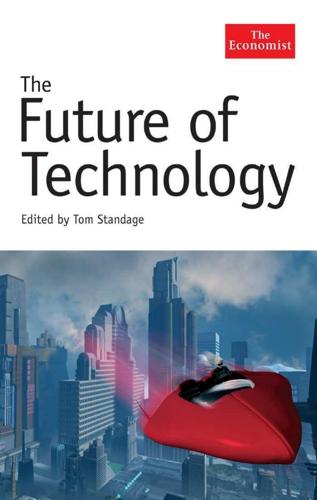
The Future of Technology
by
Tom Standage
Published 31 Aug 2005
To be sure, economics has had its place in the it industry for some years now. hp, for instance, already uses software that simulates markets to optimise the air-conditioning systems in its utility data centres. And ibm’s Institute for Advanced Commerce has studied the behaviour of bidding agents, in the hope of designing them in such a way that they do not engage in endless price wars. Now hp is reaching even higher, with experimental economics. As the name implies, researchers in this field set up controlled experiments with real people and real money to see whether economic theories actually work. Perhaps surprisingly, it seems that they do, as demonstrated by the work of Vernon Smith of George Mason University in Virginia. (Mr Smith is considered the founding father of this field and won the 2002 Nobel prize in economics.)

What to Think About Machines That Think: Today's Leading Thinkers on the Age of Machine Intelligence
by
John Brockman
Published 5 Oct 2015
We’re not even rational in the sense of being logical and explicitly deductive. We’re fast, intuitive, and emotional. Economists believe we are Homo economicus—selfish and rational, acting with reason in our own self-interest. But most economic and social interactions deal with fairness, trust, sharing, and long-term relationships. Experimental economics shows us that when we act directly and without hesitation, we’re social and cooperative. Only when we start thinking for some seconds do we choose to be selfish. Unless we deal with computers. When we play economic games with machine counterparts, we tend to be cold and egoistic. You can even measure the difference in our blood flow in the brain and in the hormones in our bloodstream.
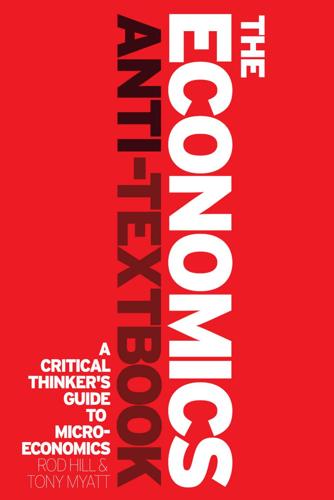
The Economics Anti-Textbook: A Critical Thinker's Guide to Microeconomics
by
Rod Hill
and
Anthony Myatt
Published 15 Mar 2010
Rosen (1981) ‘Rankorder tournaments as optimum labor contracts’, Journal of Political Economy, 89(5): 841–61. 282 ‘The general theory of the second best’, Review of Economic Studies, 24(1): 11–32. Littlechild, S. (1981) ‘Misleading calculations of the social costs of monopoly power’, Economic Journal, 91: 348–63. Lombardini-Riipinen, C. and M. Autio (2007) ‘Coverage of behavioral and experimental economics in undergraduate microeconomics textbooks’, SSRN, December, available at ssrn. com/abstract=1088076. Lunn, P. and T. Harford (2008) ‘Behavioural economics: is it such a big deal?’, Prospect Magazine, 150, September. Machin, S. and A. Manning (2004) ‘A test of competitive labor market theory: the wage structure among care assistants in the south of England’, Industrial and Labor Relations Review, 57(3): 371–85.

Greater: Britain After the Storm
by
Penny Mordaunt
and
Chris Lewis
Published 19 May 2021
Hayek was praised by John Maynard Keynes and invited by Beveridge to become a professor at the London School of Economics (LSE) in the 1930s.7 This was when the left and right were focused on the problem in hand, rather than on mutual homicide. Beveridge and Hayek were the Odd Couple of 1930s economics. The LSE had been founded by Fabians in 1895 and had developed a reputation for socialism. Yet by the 1930s, in a period of experimental economic cross-dressing, it had embraced liberalism – just at the time when Hayek’s native country was turning towards fascism. Being different in almost every way from the democracy of Britain, perhaps it is the crushing conformity of communism and fascism that destroys individual excellence, and hence progress and enlightenment.
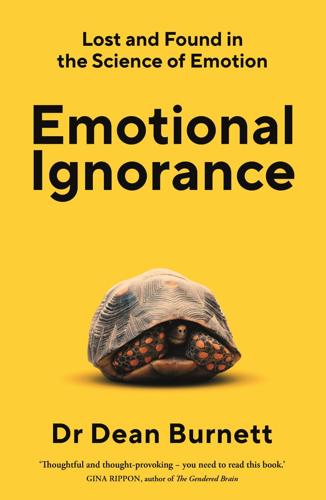
Emotional Ignorance: Lost and Found in the Science of Emotion
by
Dean Burnett
Published 10 Jan 2023
Liu, ‘Emotion recognition is China’s new surveillance craze’, Financial Times, 1 November 2019. 69 Matt, S.J., ‘What the history of emotions can offer to psychologists, economists, and computer scientists (among others)’, History of Psychology, 2021, 24(2): p. 121. 70 Ortmann, A. and R. Hertwig, ‘The costs of deception: evidence from psychology’, Experimental Economics, 2002, 5(2): pp. 111–131. 71 Warren, G., E. Schertler, and P. Bull, ‘Detecting deception from emotional and unemotional cues’, Journal of Nonverbal Behavior, 2009, 33(1): pp. 59–69. 72 Rodero, E. and I. Lucas, ‘Synthetic versus human voices in audiobooks: the human emotional intimacy effect’, New Media & Society, June 2021. 73 Liu, et al., ‘Seeing Jesus in toast’. 74 Seyama, J. and R.S.

Bourgeois Dignity: Why Economics Can't Explain the Modern World
by
Deirdre N. McCloskey
Published 15 Nov 2011
Thus around 1280 CE one Walter of Henley, well before our modern times devoted to gauging value in money, wrote in French an estate manual for English lords filled with quantitative prudence of a wholly rational sort.20 So was Mesopotamia four millennia earlier filled with quantitative prudence in accounts. Nowadays the behavioral economics of, say, Dan Ariely does a job of demolishing claims of individual rationality in moderns. Yet it too commits the Weberian mistake of focusing on individual psychology instead of group sociology and market economics. The experimental economics of Vernon Smith, Bart Wilson, Erik Kimbrough, and others, by contrast, works always with groups, showing that a wisdom of crowds often prevails over psychological shortsightedness and calculative confusion. And, by the way, it makes a good case that property arises without the help of the state or the nudging of the clerisy.21 Irrationality is always with us.
…
Observer, March 22. http://www.theguardian.com/world/2014/mar/23/francois-hollande-tulle-elections-france. Wilson, Bart J. 2010. “Social Preferences Aren’t Preferences.” Journal of Economic Behavior & Organization 73:77–82. Wilson, Bart J., Taylor Jaworski, Karl E. Schurter, and Andrew Smyth. 2012. “The Ecological and Civil Mainsprings of Property: An Experimental Economic History of Whalers’ Rules of Capture.” Journal of Law, Economics and Organization 28:617–656. Wilson, Charles. 1965. England’s Apprenticeship, 1603–1763. London: Longmans. Wilson, Charles. 1968. The Dutch Republic and the Civilisation of the Seventeenth Century. World University Library.

Capitalism 4.0: The Birth of a New Economy in the Aftermath of Crisis
by
Anatole Kaletsky
Published 22 Jun 2010
It is, however, the least radical of the alternative approaches because it does not challenge the central assumption of REH—that booms, busts, and recessions are all caused by various types of market failure and therefore that breakdowns in laissez-faire capitalism could, at least in principle, be prevented by making markets more perfect, for example, by disseminating information or strengthening the regulations against fraud. Partly because of this ideological compatibility, academic economics has been quite willing to embrace the behavioral approach. Indeed, the work on bounded rationality by Herbert Simon, game theory by Vernon Smith, experimental economics by Daniel Kahneman, and asymmetrical information by George Akerloff, Joe Stiglitz, and Michael Spence have all been rewarded with Nobel prizes. More challenging to orthodox economics is the mathematical work in chaos theory and advanced control engineering, which suggests that most of the mathematical techniques used by precrisis academic economics were simply wrong.

Culture and Prosperity: The Truth About Markets - Why Some Nations Are Rich but Most Remain Poor
by
John Kay
Published 24 May 2004
Josephson, P. R 1995. '"Projects of the Century' in Soviet History: Large-Scale Technologies from Lenin to Gorbachev." Technology and Culture 36 (3): 519-59. Judson, H. F. 1980. The Search for Solutions. New York: Rinehart and Winston. Kagel, ]. H., and A. E. Roth. eds. 1995. The Handbook of Experimental Economics. Princeton: Princeton University Press. Kahneman, D., and A. Tversky, eds. 2000. Choices) Values and Frames. New York and Cambridge: Russell Sage Foundation and Cambridge University Press. Kakutani, S. 1941. "A Generalization of Brouwer's Fixed Point Theorem." Duke Mathematical]ournal8: 451-9.
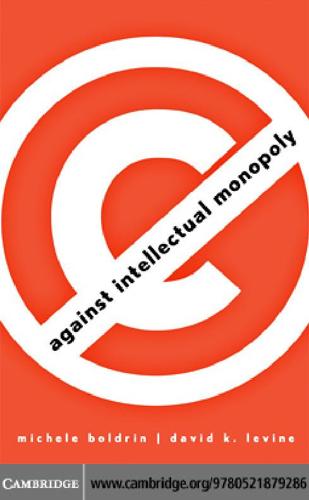
Against Intellectual Monopoly
by
Michele Boldrin
and
David K. Levine
Published 6 Jul 2008
Author with Drew Fudenberg of Learning in Games and editor of several conference volumes, his research interests include the study of intellectual property and endogenous growth in dynamic general equilibrium models; the endogenous formation of preferences, institutions, and social norms; and the application of game theory to experimental economics. Levine has published in leading journals such as American Economic Review, Econometrica, Review of Economic Studies, Journal of Political Economy, Journal of Economic Theory, Quarterly Journal of Economics, and American Political Science Review. i P1: PDX head margin: 1/2 gutter margin: 7/8 CUUS245-FM cuus245 978 0 521 87928 6 May 21, 2008 19:26 ii P1: PDX head margin: 1/2 gutter margin: 7/8 CUUS245-FM cuus245 978 0 521 87928 6 May 21, 2008 19:26 Against Intellectual Monopoly MICHELE BOLDRIN Washington University in St.
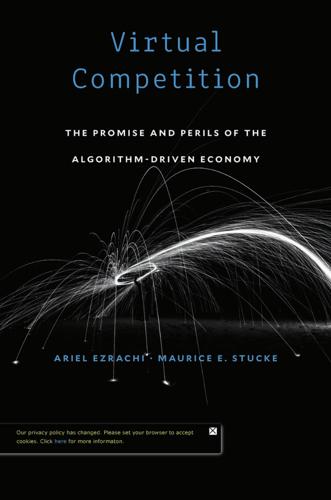
Virtual Competition
by
Ariel Ezrachi
and
Maurice E. Stucke
Published 30 Nov 2016
Instead, companies price discriminate to capture as much of the consumers’ wealth as possible. In this context price discrimination is generally perceived as unfair. Over the past thirty years, behavioral economists in the lab and the field have tested the assumption that we are greedy, self-interested profit maximizers. Some people are. But the psychological and experimental economic data show that most people care about treating others, and being treated, fairly.21 Some economists are agnostic on price discrimination, or believe that in certain instances it may be welfare-enhancing. But 91 percent of individuals in one survey thought charging higher prices to those who were more dependent on the product was offensive.22 A collateral consequence of price discrimination is a loss of trust between companies and their customers.
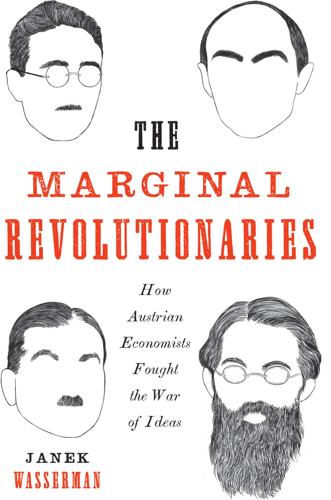
The Marginal Revolutionaries: How Austrian Economists Fought the War of Ideas
by
Janek Wasserman
Published 23 Sep 2019
As Steven Horwitz has put it, Austrians always “took account of the puzzles that were of interest to the economics profession and aimed their explanations of those puzzles at that audience of their professional peers.” The first issue of RAE addressed monetarism and Keynesianism. In subsequent years, discussions on public choice, macroeconomics, game theory, and experimental economics filled the pages of RAE and Advances in Austrian Economics. Austrians sparred with Nobelists like Milton Friedman, Ronald Coase, James Buchanan, and Douglass North. They reveled in taking apart the arguments of intellectual allies and opponents alike. As the economist Deirdre McCloskey has noted, her conversion to an appreciation of the role of rhetoric in economic thought had a Viennese accent: “I learned from Don [Lavoie] and Karen Vaughn and Jack High as exemplars that Austrian economics was not merely a pointlessly vicious doctrinal war against one’s natural allies carried out on the field of German texts. . . .

Small Wars, Big Data: The Information Revolution in Modern Conflict
by
Eli Berman
,
Joseph H. Felter
,
Jacob N. Shapiro
and
Vestal Mcintyre
Published 12 May 2018
Kalyvas and Laia Balcells, “International System and Technologies of Rebellion: How the End of the Cold War Shaped Internal Conflict,” American Political Science Review 104, no. 3 (2010): 415–29; Roger D. Petersen, Resistance and Rebellion: Lessons from Eastern Europe (Chicago: University of Chicago Press, 2006). 3 INFORMATION-CENTRIC INSURGENCY AND COUNTERINSURGENCY 1. Work in experimental economics has shown that people operating in familiar settings in which they have substantial experience tend to calculate utilities correctly and play a range of complicated equilibrium strategies. These findings are explored in a range of publications, including these: John A. List, “Does Market Experience Eliminate Market Anomalies?”

Model Thinker: What You Need to Know to Make Data Work for You
by
Scott E. Page
Published 27 Nov 2018
Ledyard, John, David Porter, and Antonio Rangle. 1997. “Experiments Testing Multiobject Allocation Mechanisms.” Journal of Economics and Management Strategy 6, no. 3: 639–675. Ledyard, John, David Porter, and Randii Wessen. 2000. “A Market-Based Mechanism for Allocating Space Shuttle Secondary Payload Priority.” Experimental Economics 2, no. 3: 173–195. Levins, Richard. 1966. “The Strategy of Model Building in Population Biology.” American Scientist 54: 421–431. Levinthal, Daniel A. 1997. “Adaptation on Rugged Landscapes.” Management Science 43: 934–950. Levinthal, Daniel. 1991. “Random Walks and Organizational Mortality.”

Good Economics for Hard Times: Better Answers to Our Biggest Problems
by
Abhijit V. Banerjee
and
Esther Duflo
Published 12 Nov 2019
That people are using statistical logic does not, of course, mean they are always drawing the right inferences from it. In one study, researchers asked Ashkenazi Jews (European or American Jews and their descendants) in Israel to play a trust game with Eastern Jews (Asian and African immigrants and their descendants). The trust game is one of the mainstays of experimental economics. It is played by two people, one of whom, the sender, is given a certain amount of money and asked to share some part of it with the other person, the receiver. The amount could be zero and is entirely left to the sender’s discretion. However, they are both told that if the sender shares any of it, that shared amount will be tripled and given to the receiver, who then has full control over the money.

Adaptive Markets: Financial Evolution at the Speed of Thought
by
Andrew W. Lo
Published 3 Apr 2017
The difference in adaptation between systematic and idiosyncratic risk is evolutionarily tremendous, giving rise to entirely different behaviors. As we saw earlier, nature abhors an undiversified bet. THE ORIGIN OF RISK AVERSION Probability matching may seem like foolish behavior in an experimental economics laboratory, but it’s likely to have originated from an environment where that kind of behavior conferred certain survival benefits that other behaviors did not. Using the mathematical framework that Tom and I developed, we can identify the specific environments that gave rise to such behavior.

Never Let a Serious Crisis Go to Waste: How Neoliberalism Survived the Financial Meltdown
by
Philip Mirowski
Published 24 Jun 2013
Let us look more closely at the practical mechanics of orthodox contemporary “economics imperialism.” While gleefully encroaching upon the spheres of interest of other disciplines, orthodox economics has also freely appropriated formalisms and methods from those other disciplines: think of the advent of “experimental economics” or the embrace of magnetic resonance imaging, or attempts to absorb chaos theory or nonstandard analysis or Brownian motion through the Ito calculus. Indeed, if there has been any conceptual constant throughout the history of neoclassical theory since the 1870s, it has been slavish attempts to slake its physics envy through gorging on half-digested imitations of physical models.

Termites of the State: Why Complexity Leads to Inequality
by
Vito Tanzi
Published 28 Dec 2017
In the new century, an important new government role began that has accelerated in recent years: the use of paternalistically inspired regulations and so-called public nudges to promote, on the part of citizens and enterprises, behavior considered socially desirable (see Thaler and Sunstein, 2008). Some of these new regulations, or simply nudges, were justified and promoted using results obtained from experiments conducted by a fastgrowing new branch of economics called “experimental economics” (see Lewis, 2017). The nudges had the virtue of not needing compulsion on the part of the government or (significant) public resources. Therefore, the movement could be considered “paternalistically libertarian,” because individuals and enterprises were free to ignore the nudges, at low or no costs.

Blueprint: The Evolutionary Origins of a Good Society
by
Nicholas A. Christakis
Published 26 Mar 2019
Heath, “Inside Amazon’s Clickworker Platform,” TechRepublic, 2016, https://www.techrepublic.com/article/inside-amazons-clickworker-platform-how-half-a-million-people-are-training-ai-for-pennies-per-task/. 3. J. Bohannon, “Psychologists Grow Increasingly Dependent on Online Research Subjects,” Science, June 7, 2016. 4. J. J. Horton, D. G. Rand, and R. J. Zeckhauser, “The Online Laboratory: Conducting Experiments in a Real Labor Market,” Experimental Economics 14 (2011): 399–425; E. Snowberg and L. Yariv, “Testing the Waters: Behavior Across Participant Pools” (working paper no. 24781, National Bureau of Economic Research, June 2018). 5. M. Zelditch, “Can You Really Study an Army in the Laboratory?,” in A. Etzioni, ed., Complex Organizations, 2nd ed.

Atomic Accidents: A History of Nuclear Meltdowns and Disasters: From the Ozark Mountains to Fukushima
by
James Mahaffey
Published 15 Feb 2015
There are many fine hydroelectric dams in the United States, each demonstrating the American ability to bend nature to our needs with well-thought-out engineering practice and the skill necessary to build large things. In 1961 the United States and the Soviet Union were engaged in an all-out war. It was a cold war, in which the purpose was not to see how many of the other side we could kill but to prove who had the superior experimental economic system. It was an American form of capitalism against a Russian form of communism, and the battles raged on many fronts. The Soviets had already cleaned our plow in the race for manned space flight, putting Vostok 1 with Yuri Gagarin into orbit on April 14. We were falling way behind. Thinking to show the U.S., which had built the magnificent Hoover Dam in Nevada, how to really build a hydroelectric plant, the Soviet Union decided to construct the world’s largest reservoir to produce an impressive 6.4 billion watts of power using a line of ten turbo-generators.

The WEIRDest People in the World: How the West Became Psychologically Peculiar and Particularly Prosperous
by
Joseph Henrich
Published 7 Sep 2020
Toubert, P. (1996). The Carolingian moment. In A. Burguiere, C. Klapisch-Zuber, M. Segalen, and F. Zonabend (eds.), A History of the Family (pp. 379–406). Cambridge, MA: Belknap Press of Harvard University Press. Tracer, D. P. (2003). Selfishness and fairness in economic and evolutionary perspective: An experimental economic study in Papua New Guinea. Current Anthropology 44 (3), 432–38. Tracer, D. P. (2004). Market integration, reciprocity, and fairness in rural Papua New Guinea: Results from two-village Ultimatum Game experiments. In J. Henrich, R. Boyd, S. Bowles, C. Camerer, E. Fehr, and H. Gintis (eds.), Foundations of Human Sociality: Economic Experiments and Ethnographic Evidence from Fifteen Small-Scale Societies (pp. 232–59).

Chokepoints: American Power in the Age of Economic Warfare
by
Edward Fishman
Published 25 Feb 2025
Finally, after calls from senior U.S. officials including Janet Yellen and Tony Blinken, Warsaw agreed to relent if the price cap was lowered to $60. This felt reasonable, and so the final price was set just over forty-eight hours before the policy was scheduled to take effect. Biden officials were relieved. They had fought hard for more than six months to get to this point. They had been called idiots and worse. Now their experimental economic weapon would be tested by the only judge that really mattered: the market. The early evidence was alarming. After the clock struck midnight on December 5, a traffic jam formed at the mouth of the Bosphorus, the narrow strait that flows through the center of Istanbul. Turkish maritime authorities were refusing to allow oil tankers to transit the chokepoint unless they could demonstrate that their cargoes complied with the price cap.
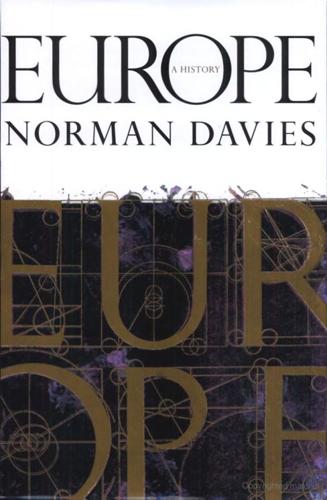
Europe: A History
by
Norman Davies
Published 1 Jan 1996
The CMEA allocated specialized tasks to each member country, and put great store on the dissemination of modern science and technology. This satisfied everyone, except Romania. But the main pilot scheme was launched in Hungary. Andropov, now head of the CPSU’s International Department, and Kádár both realized that the reign of terror which followed the Hungarian rising had created an opening for intelligent economic experimentation. Economic reform could proceed without the threat of political turbulence. ‘Goulash communism’ would cure well-fed citizens of their dreams of liberty. The main idea was to introduce limited market mechanisms into a system still controlled by the state, and to encourage enterprise, especially in agriculture, by relaxing controls on compulsory deliveries and land ownership.